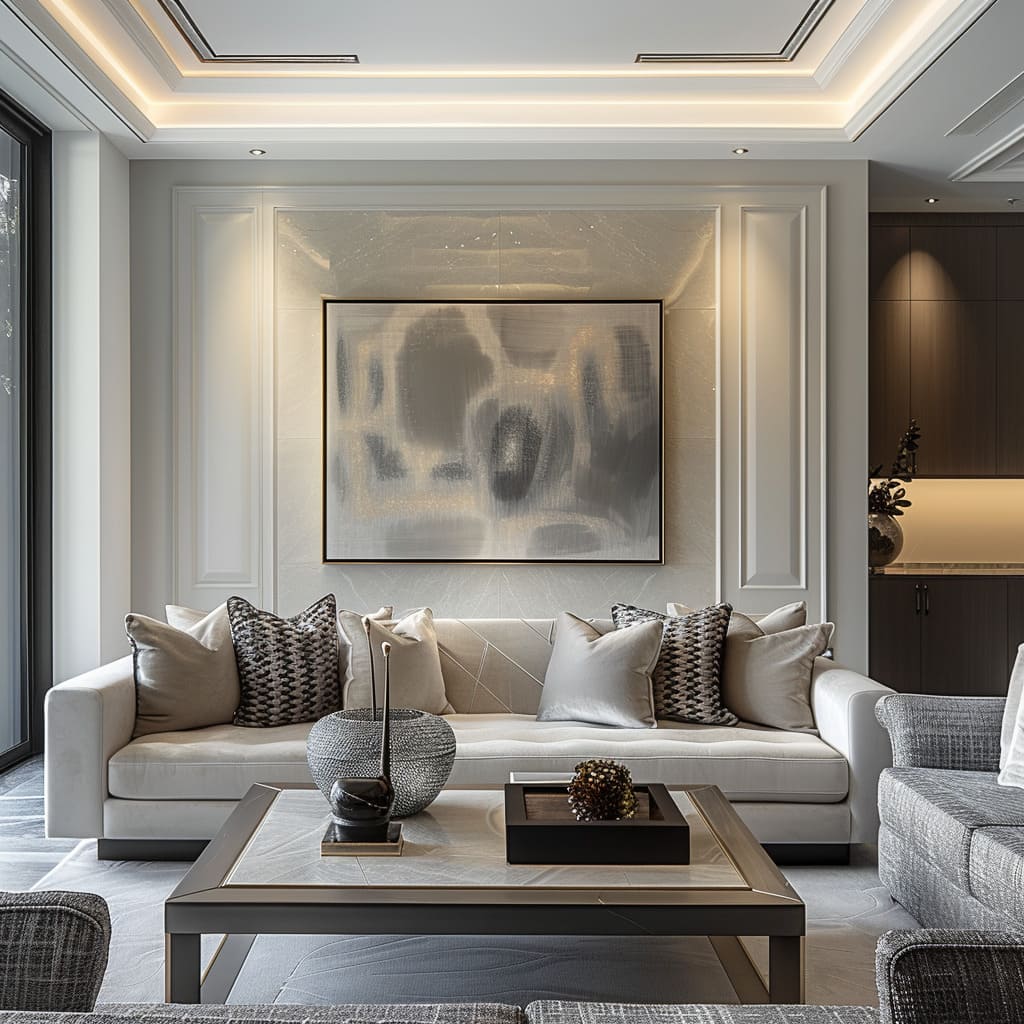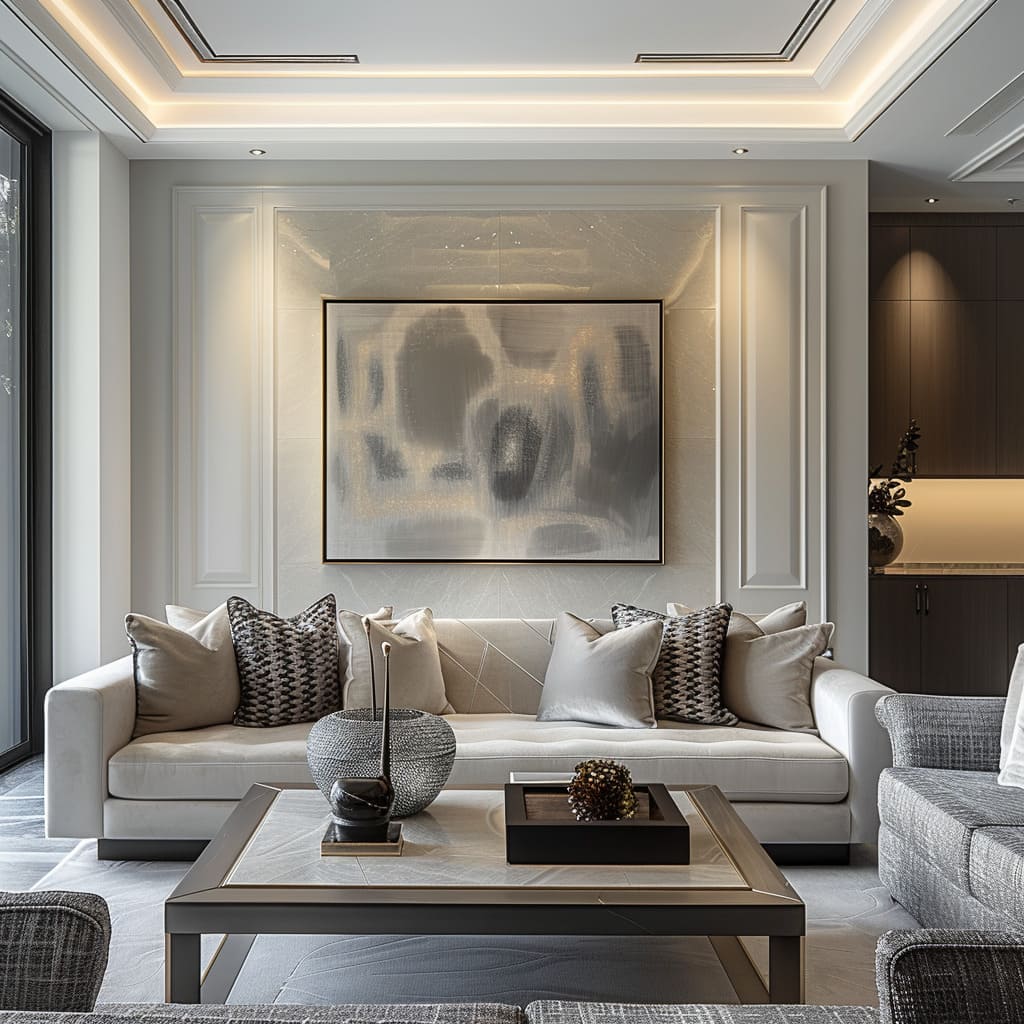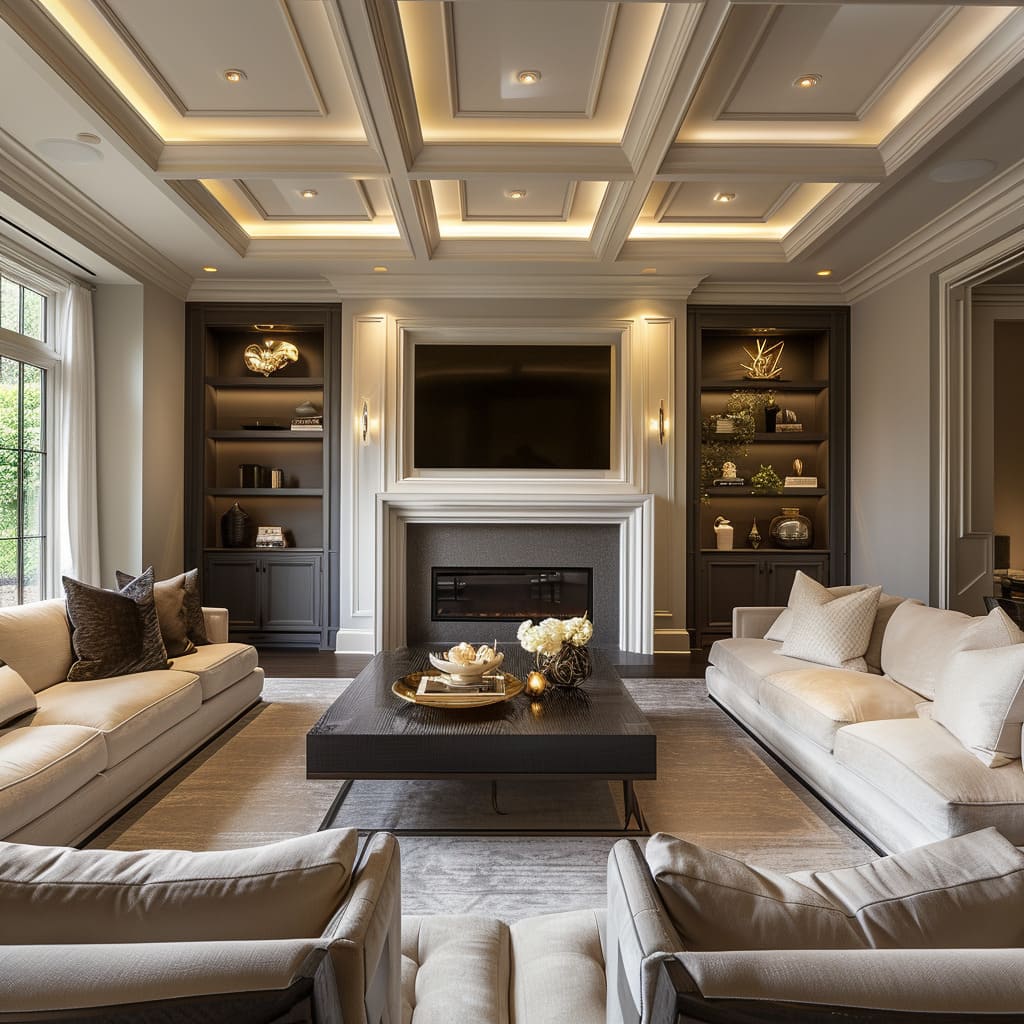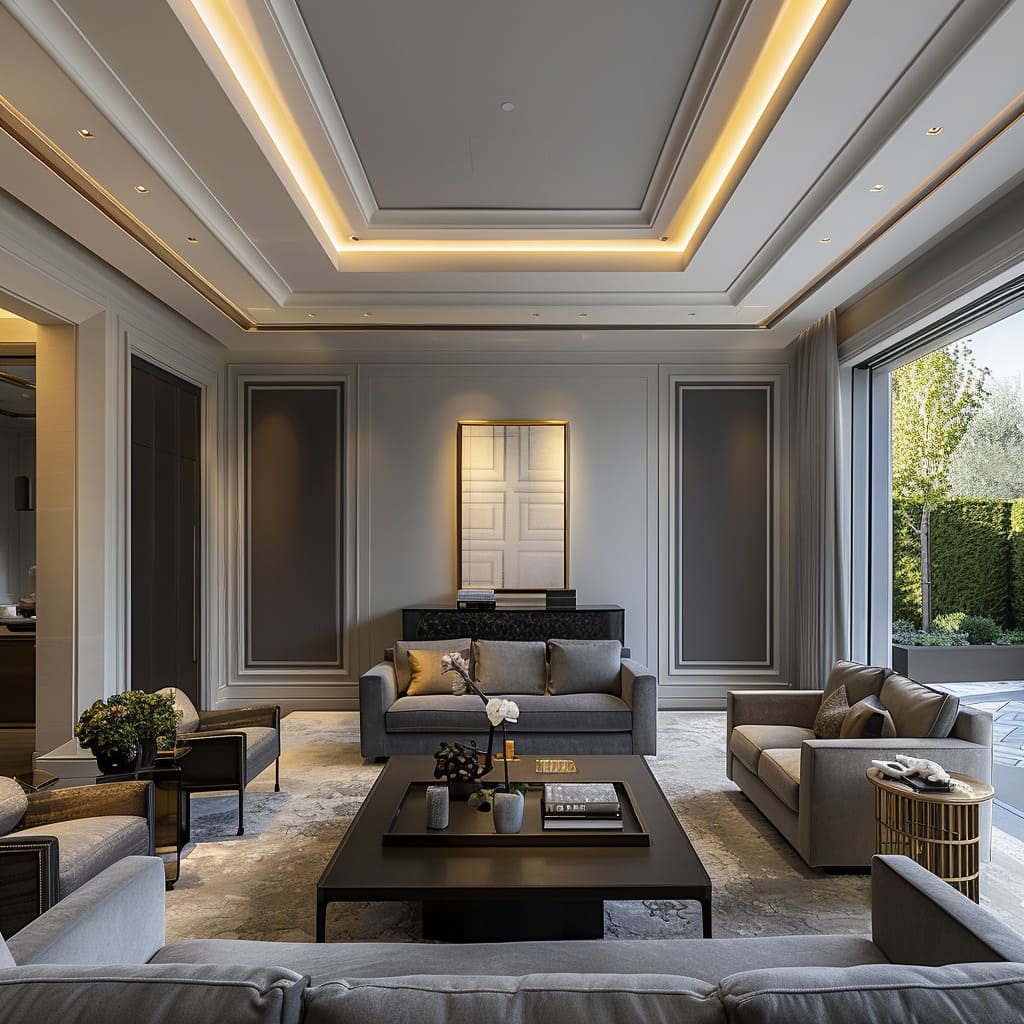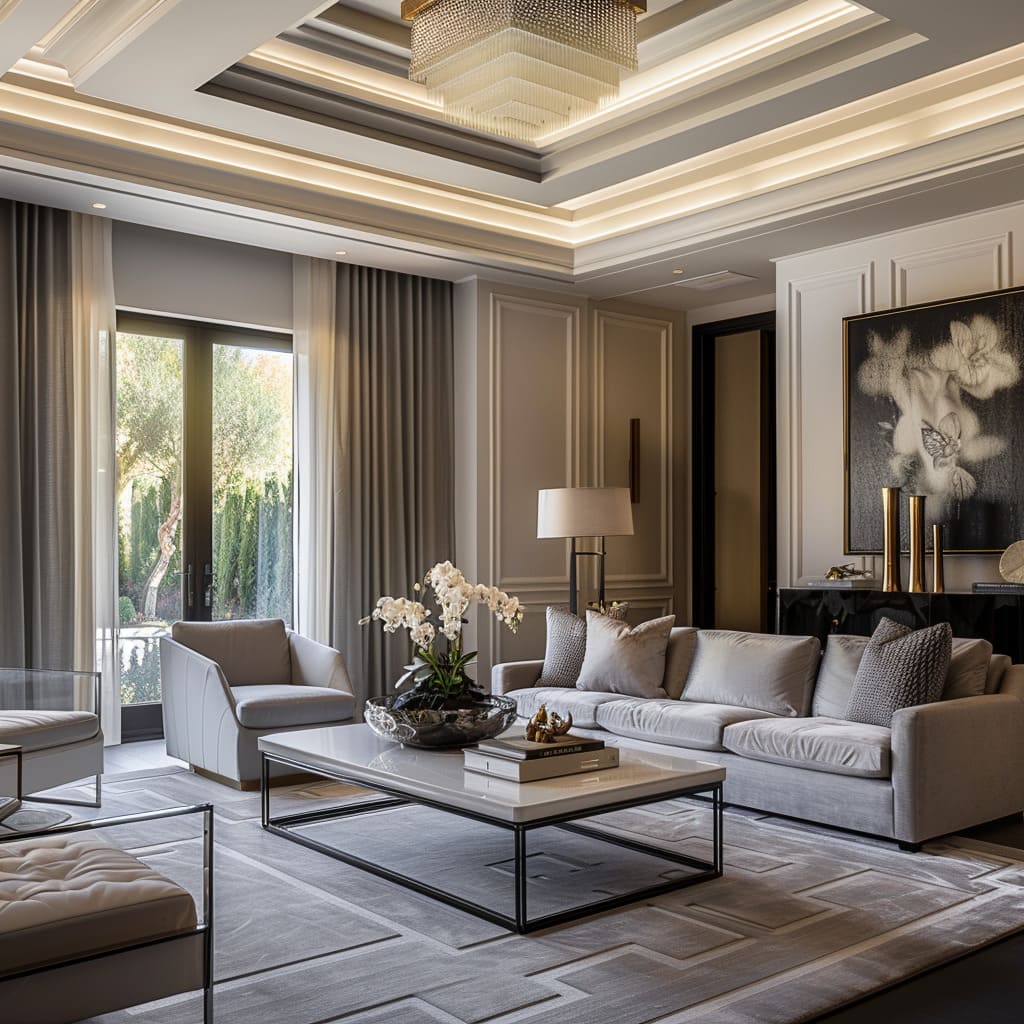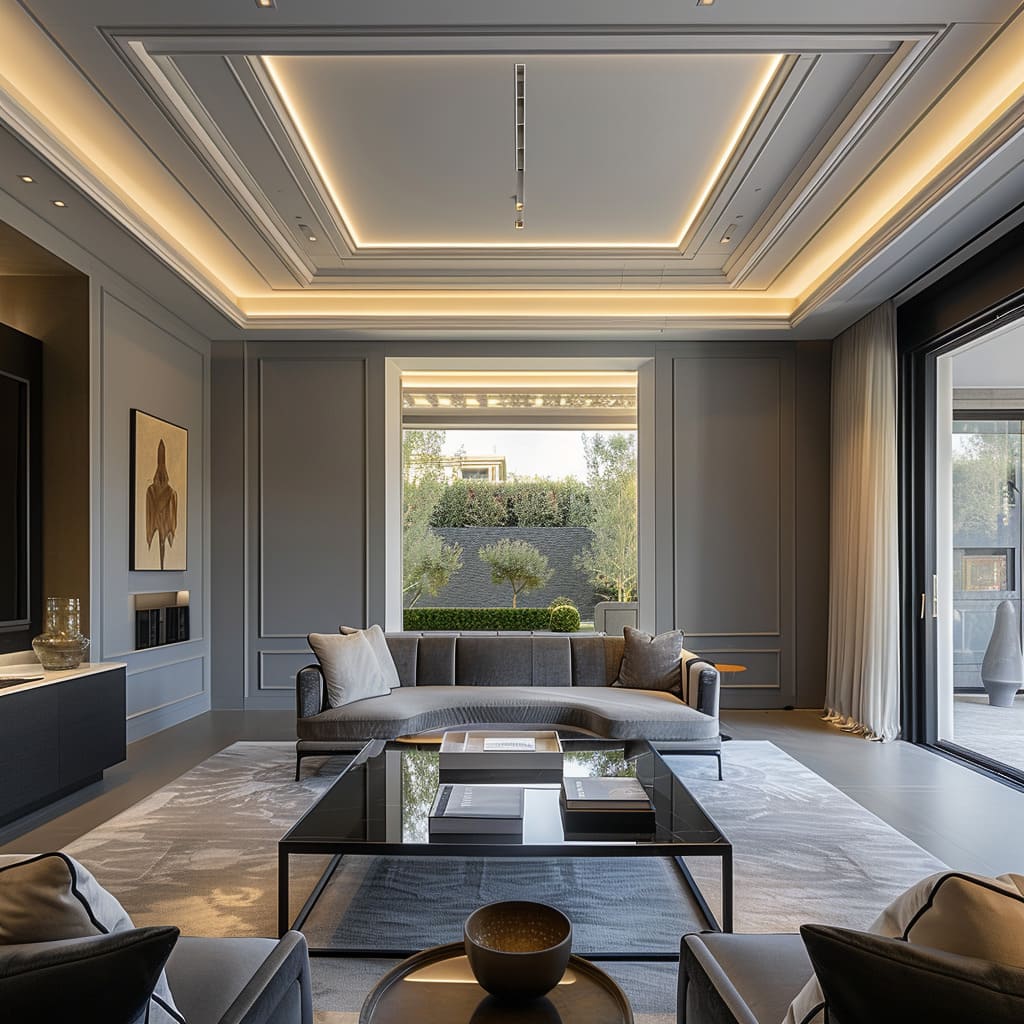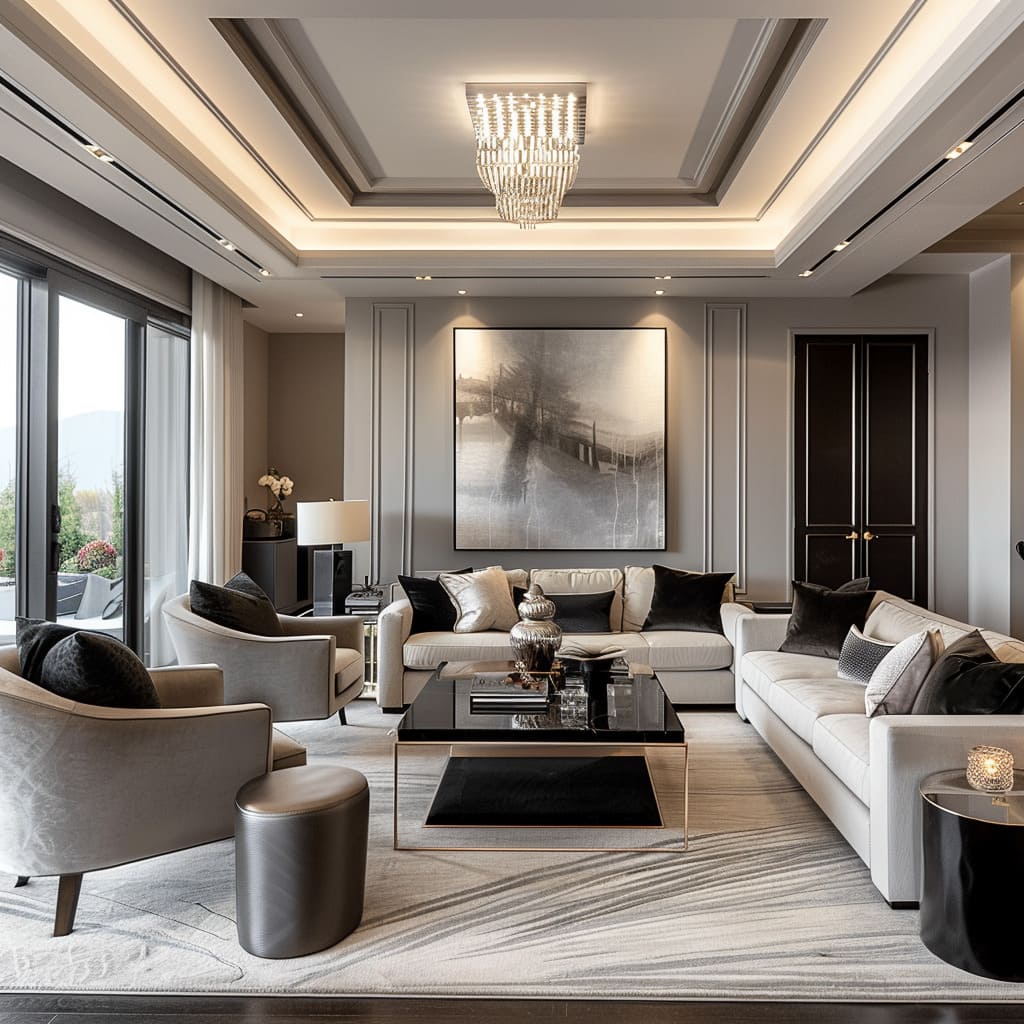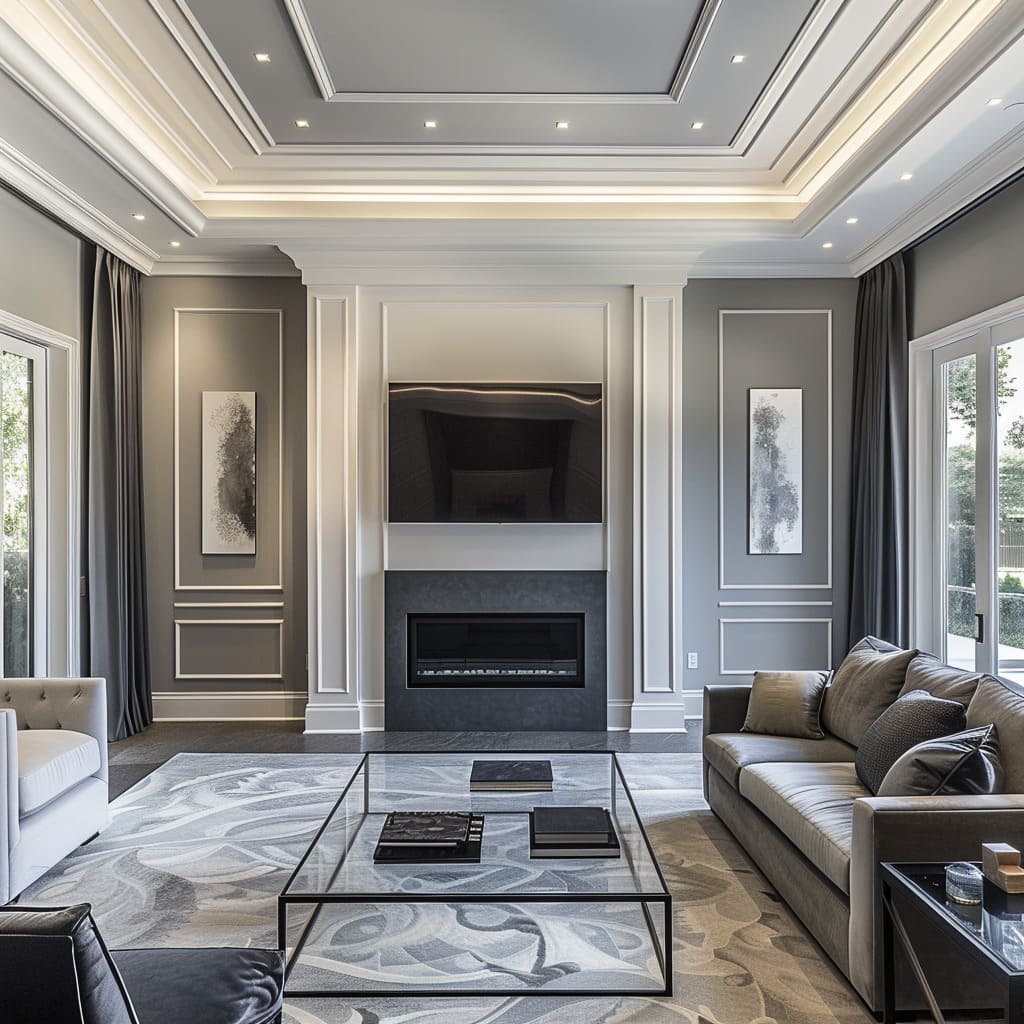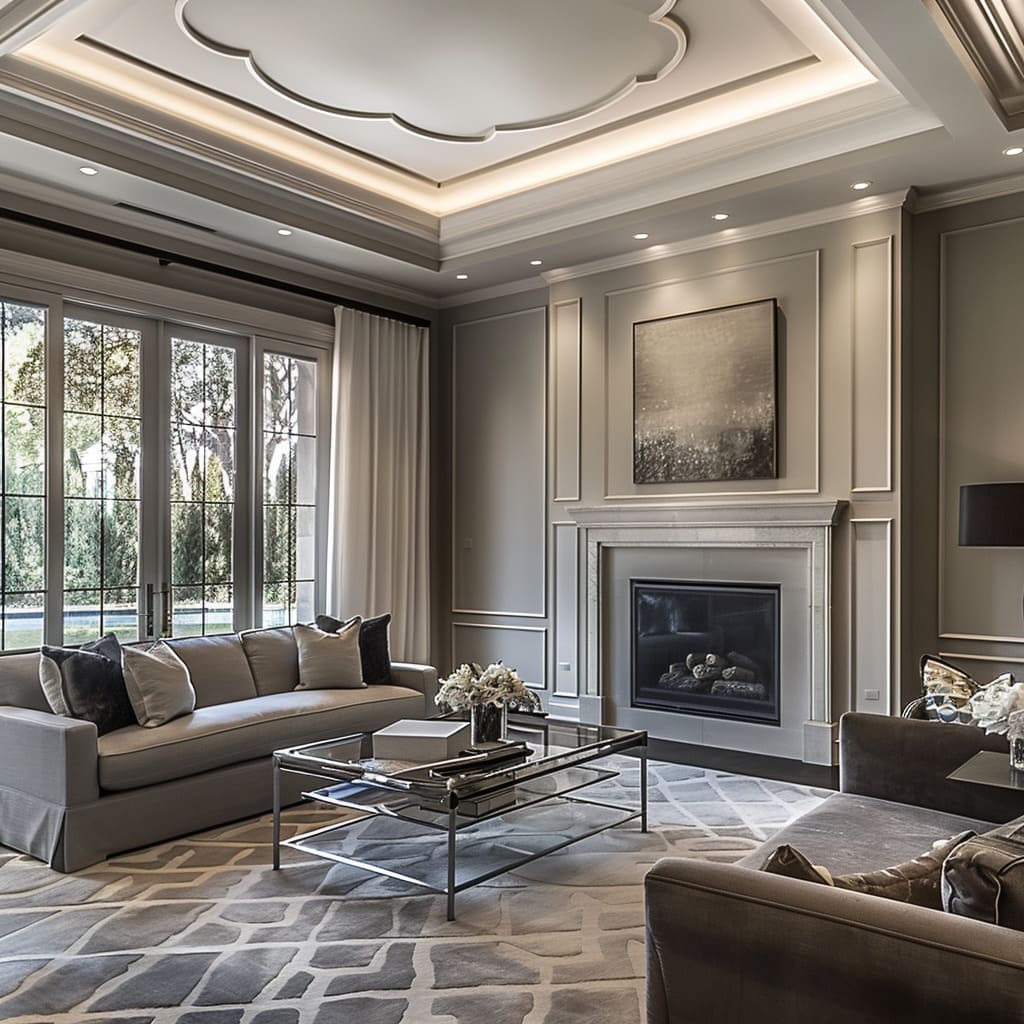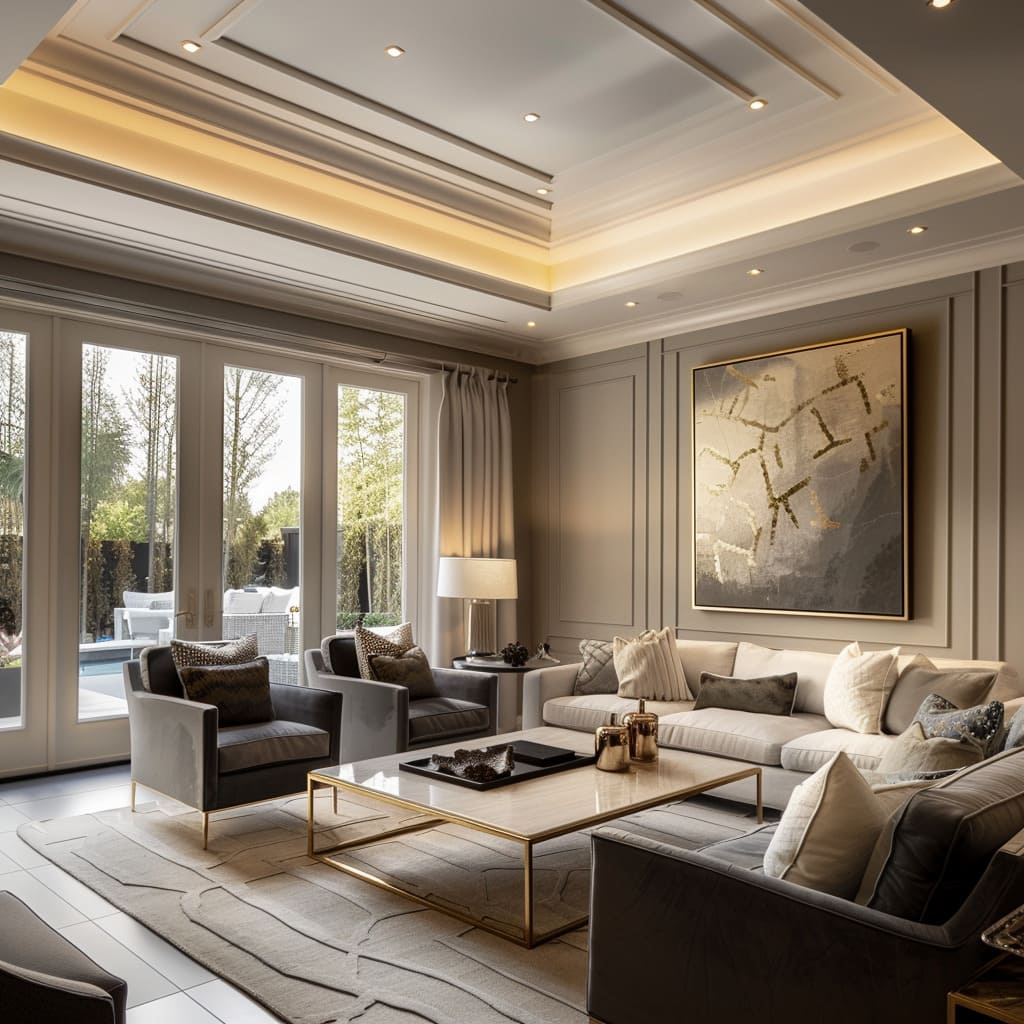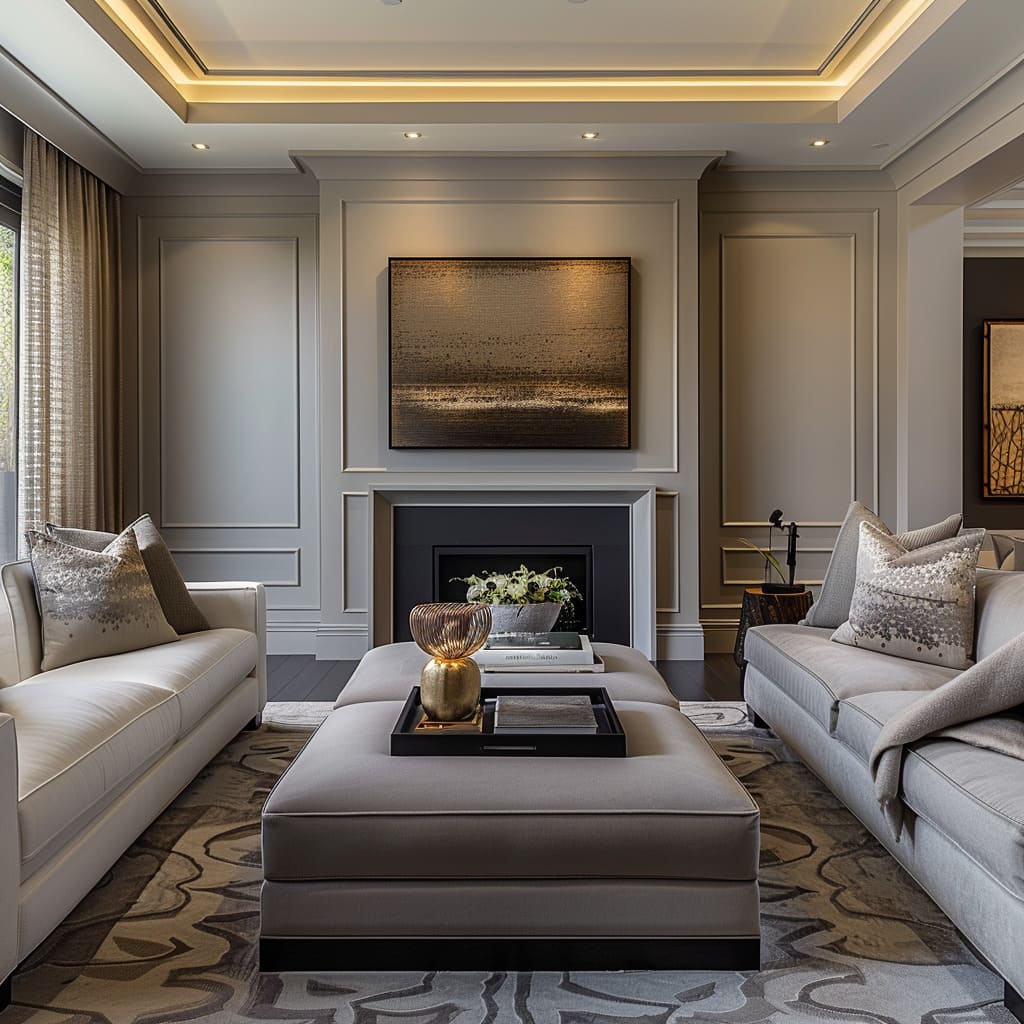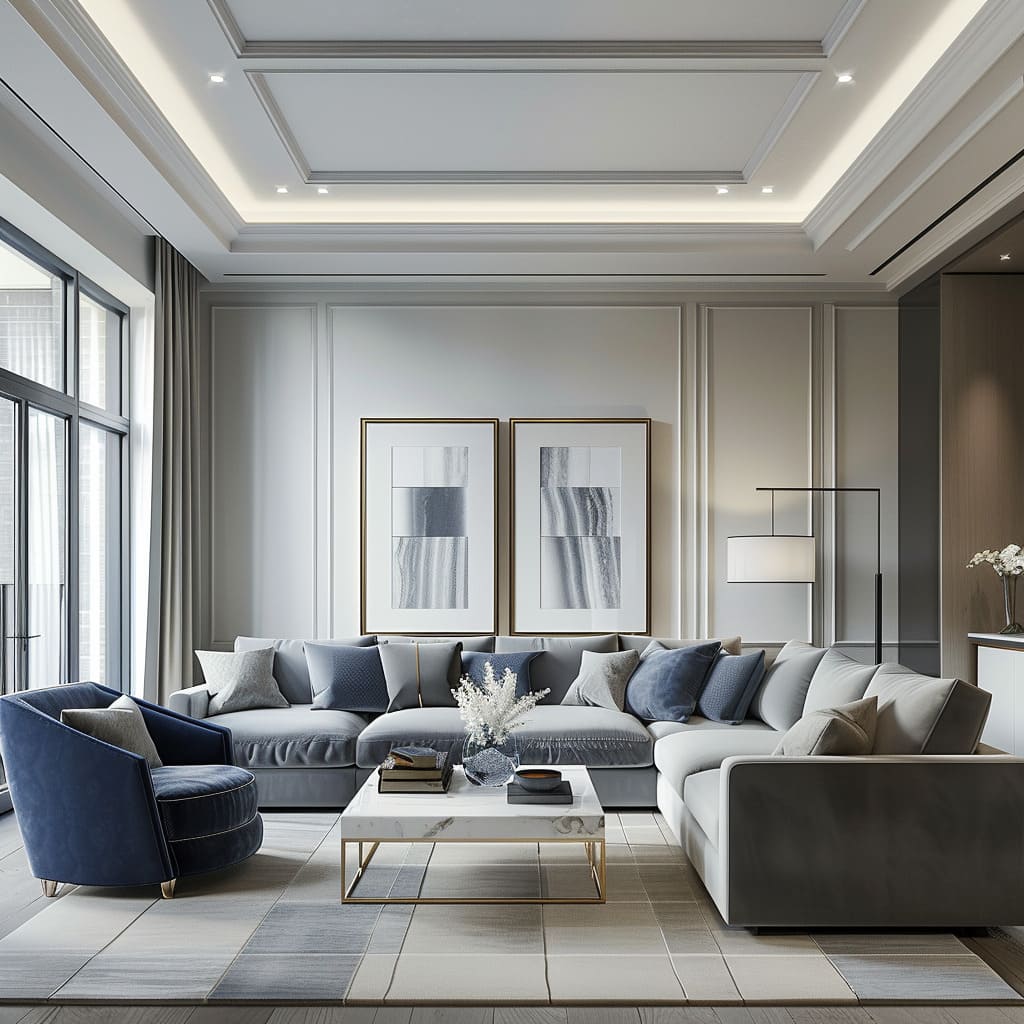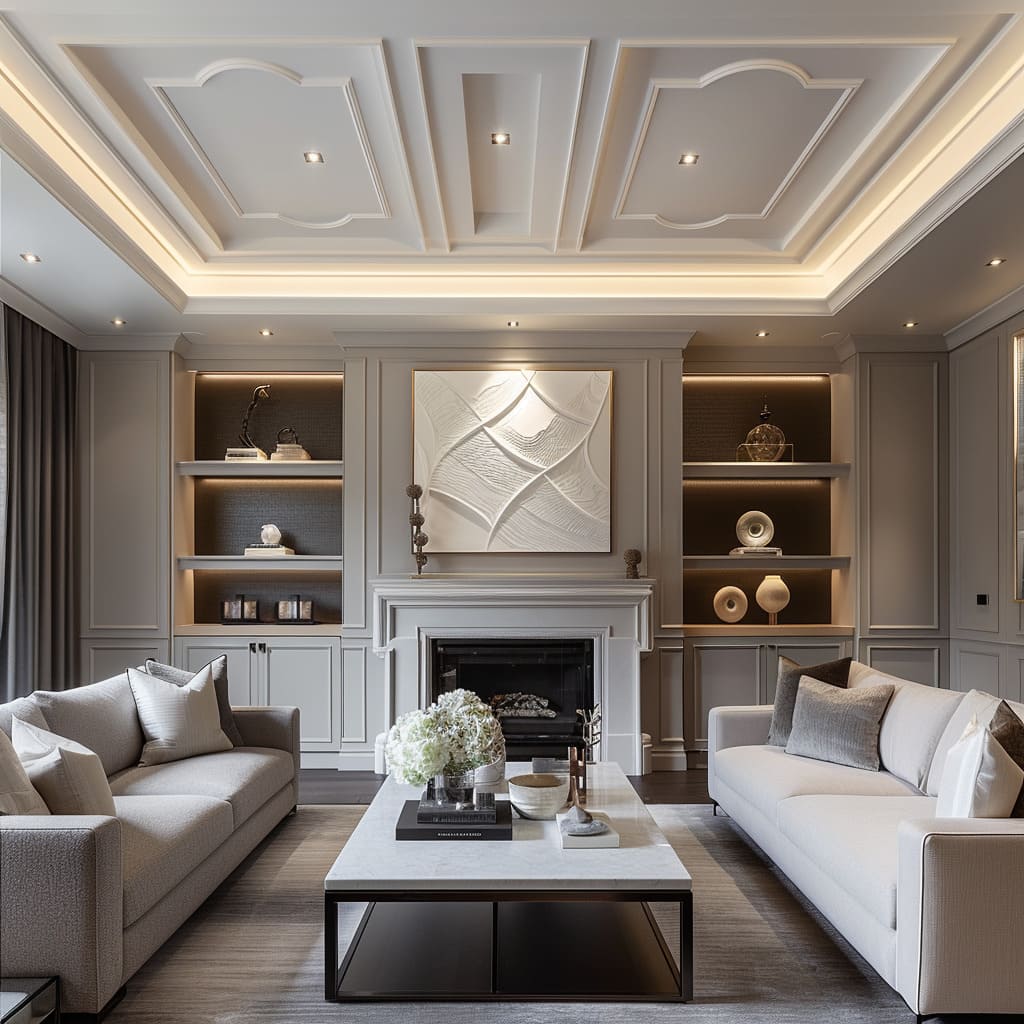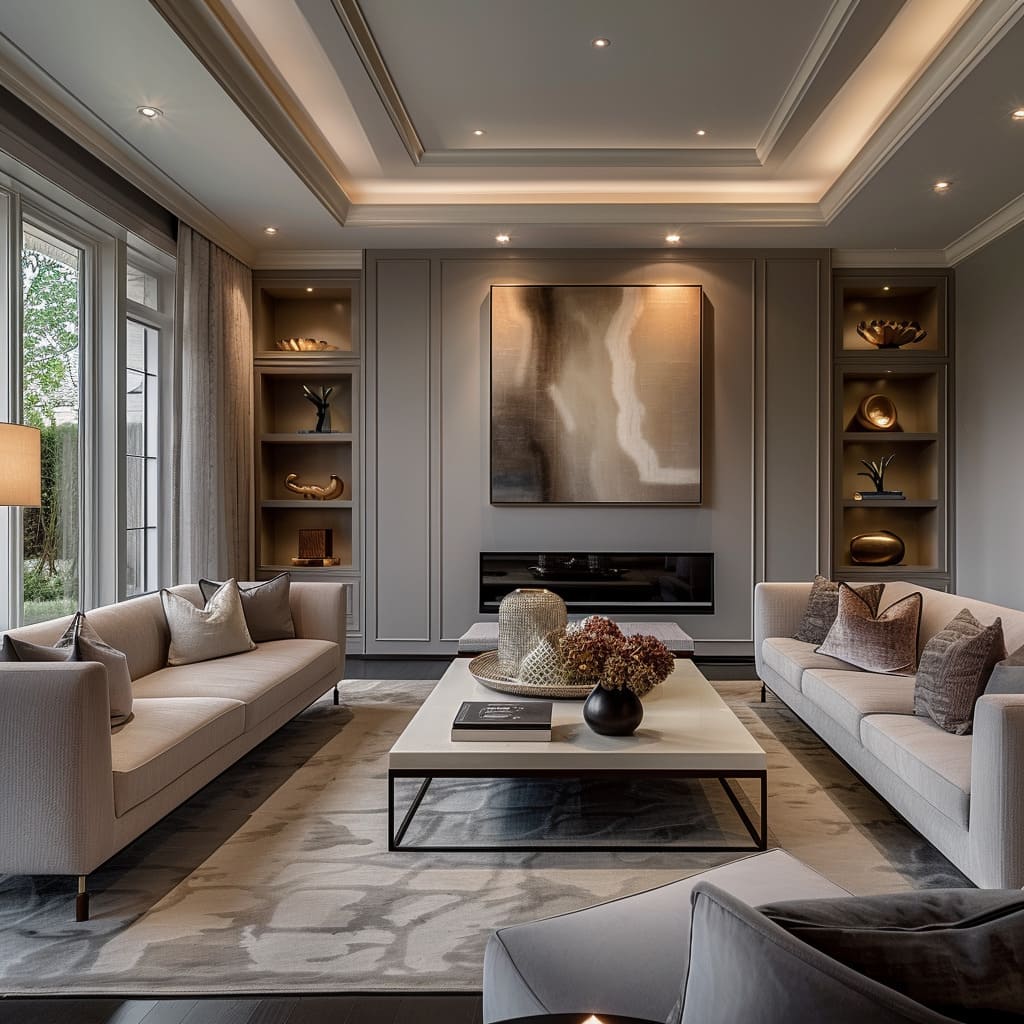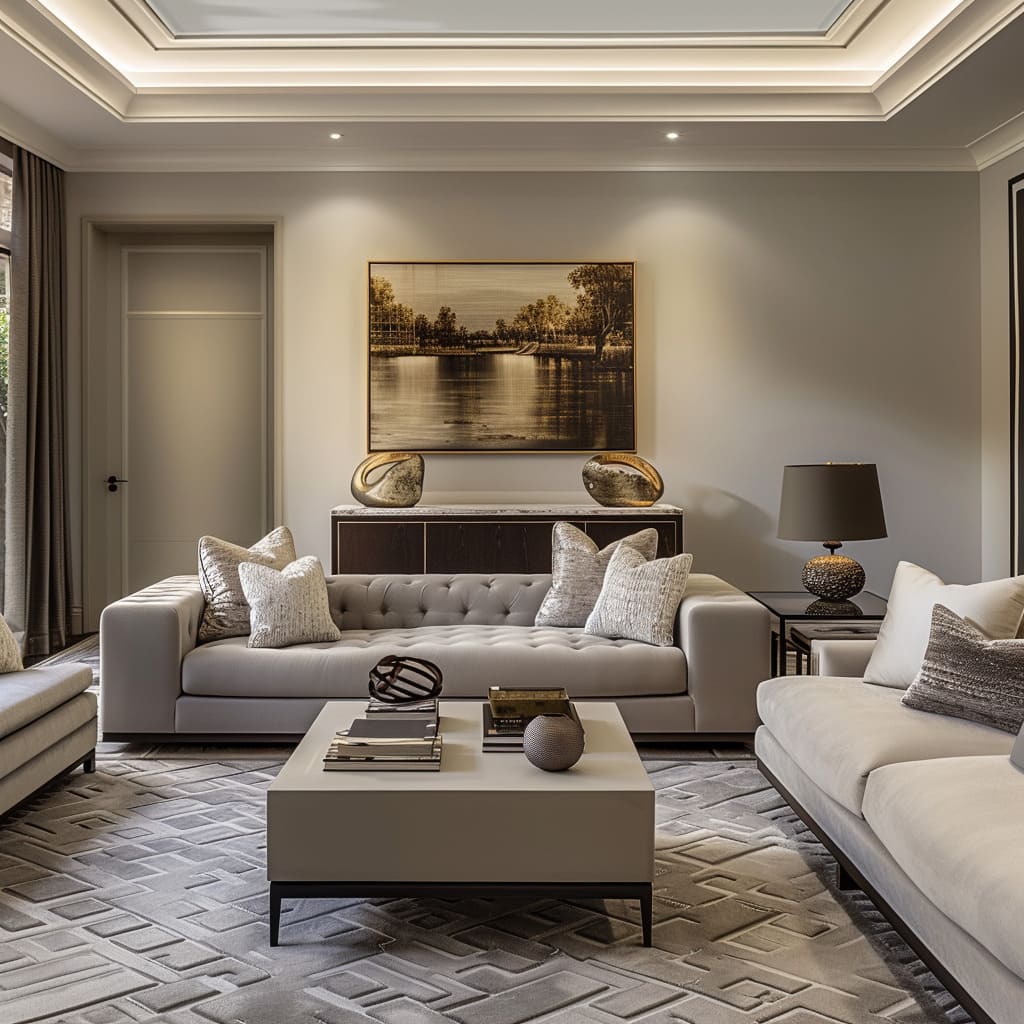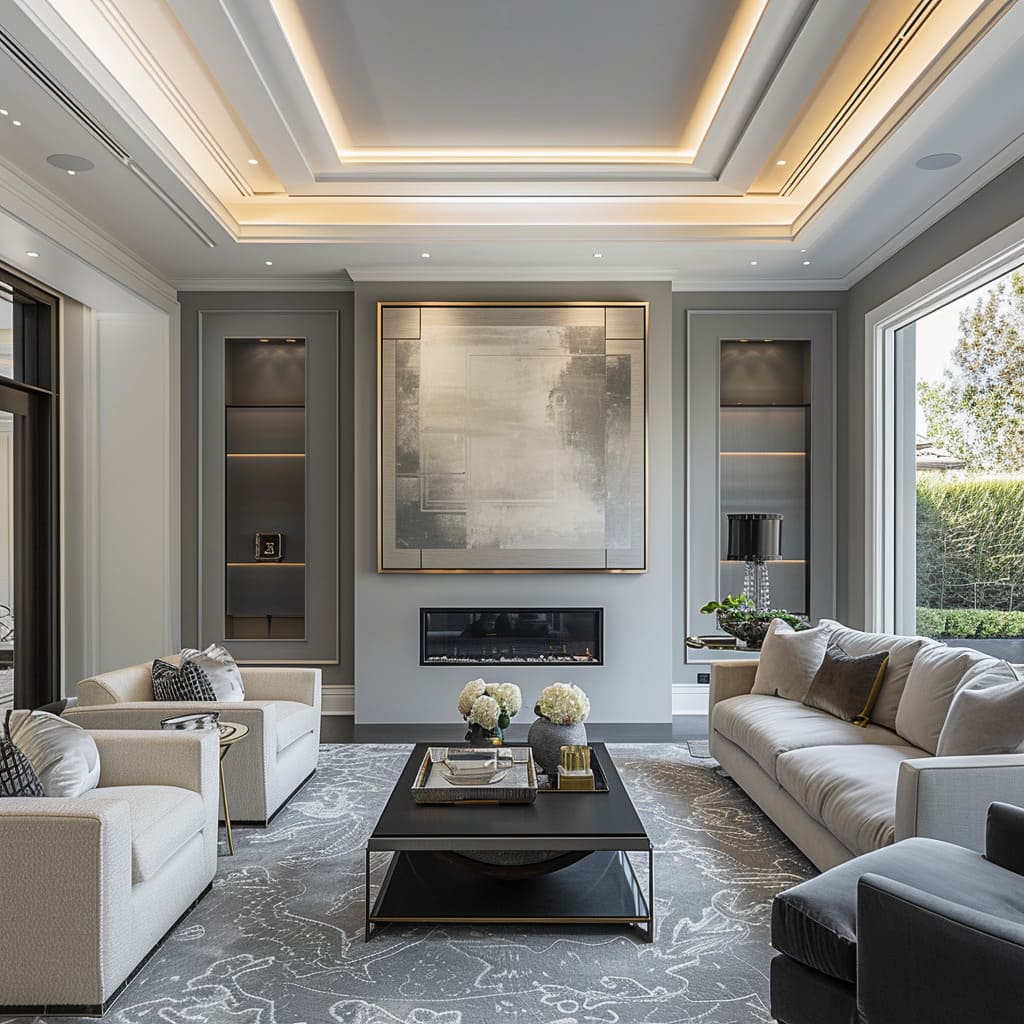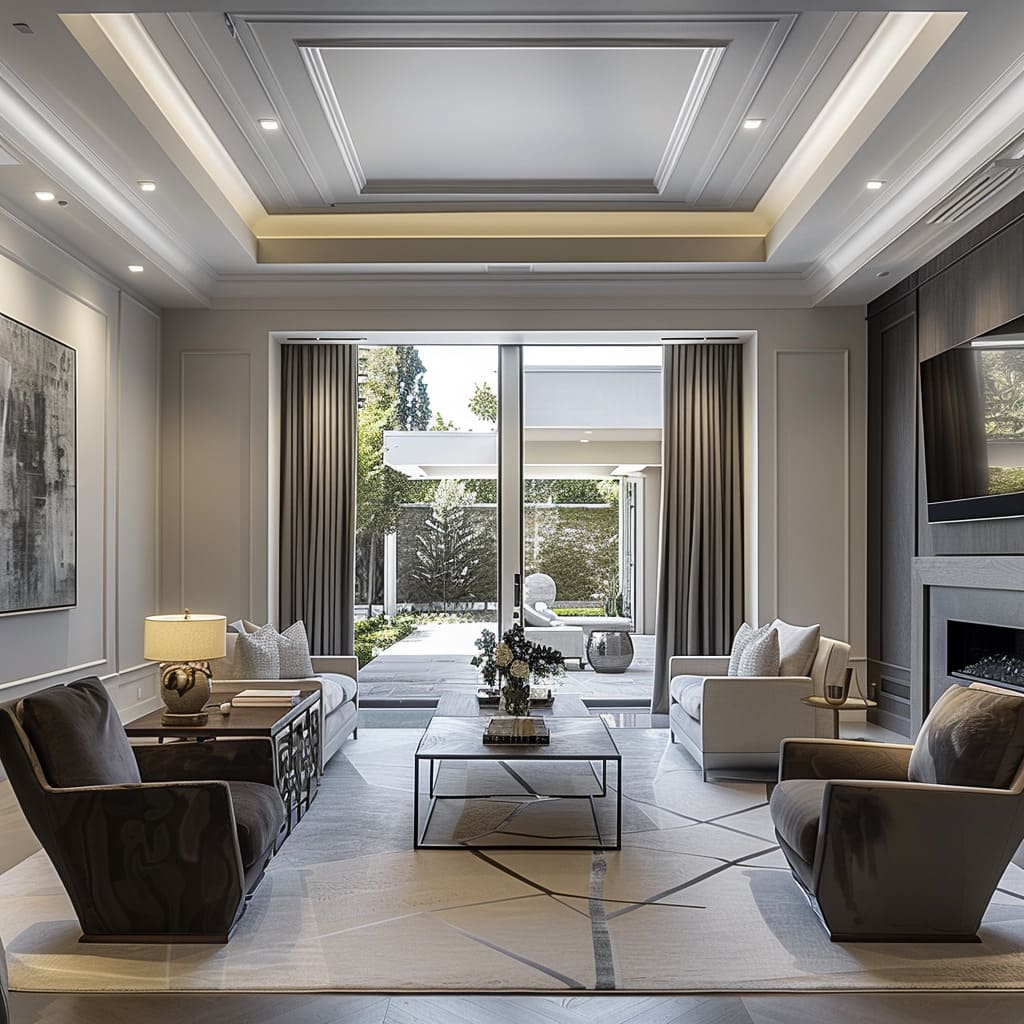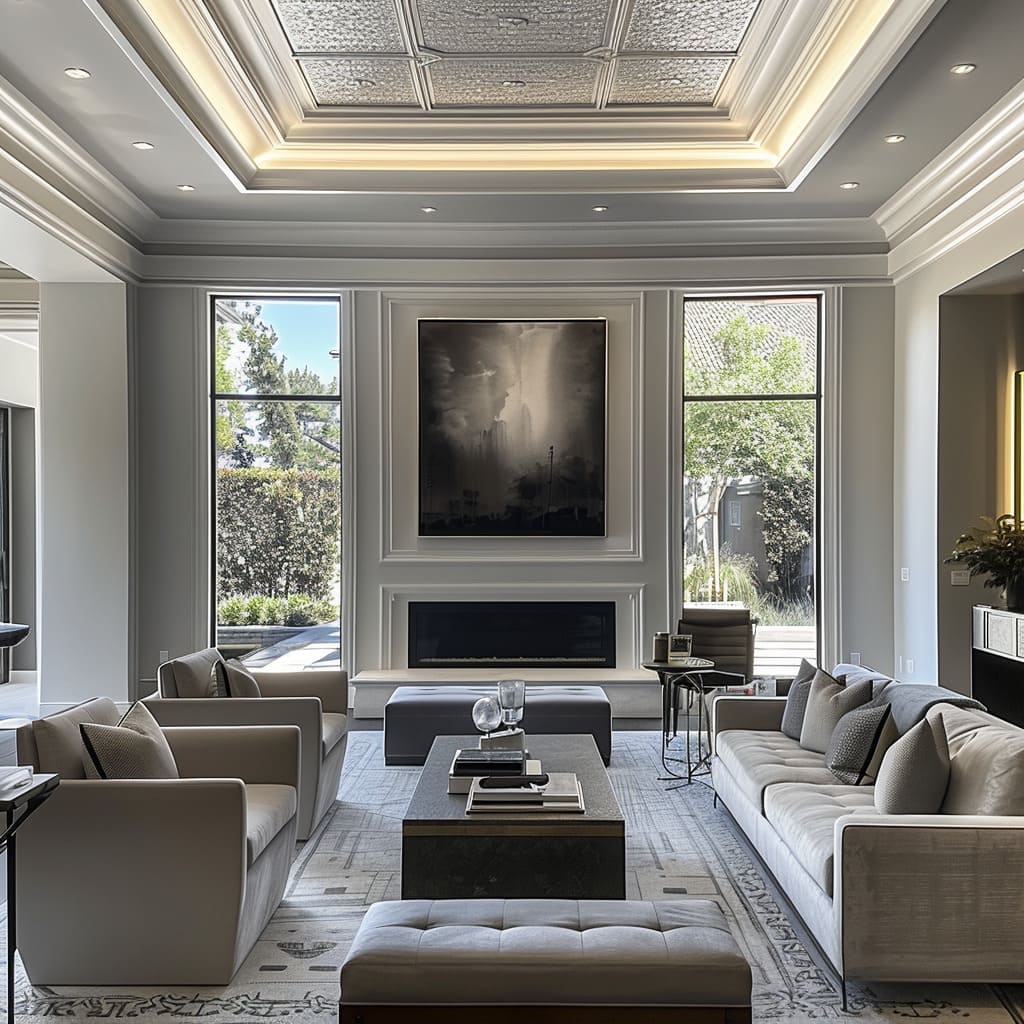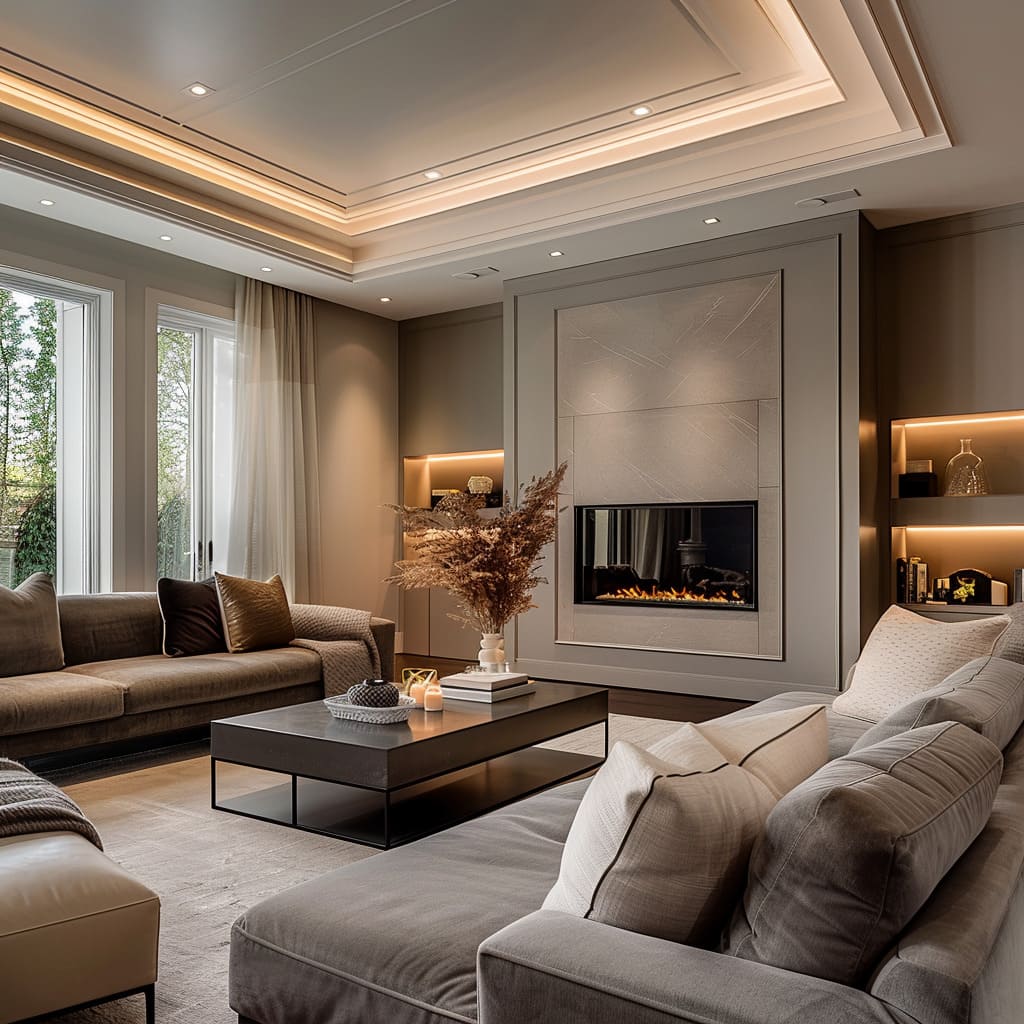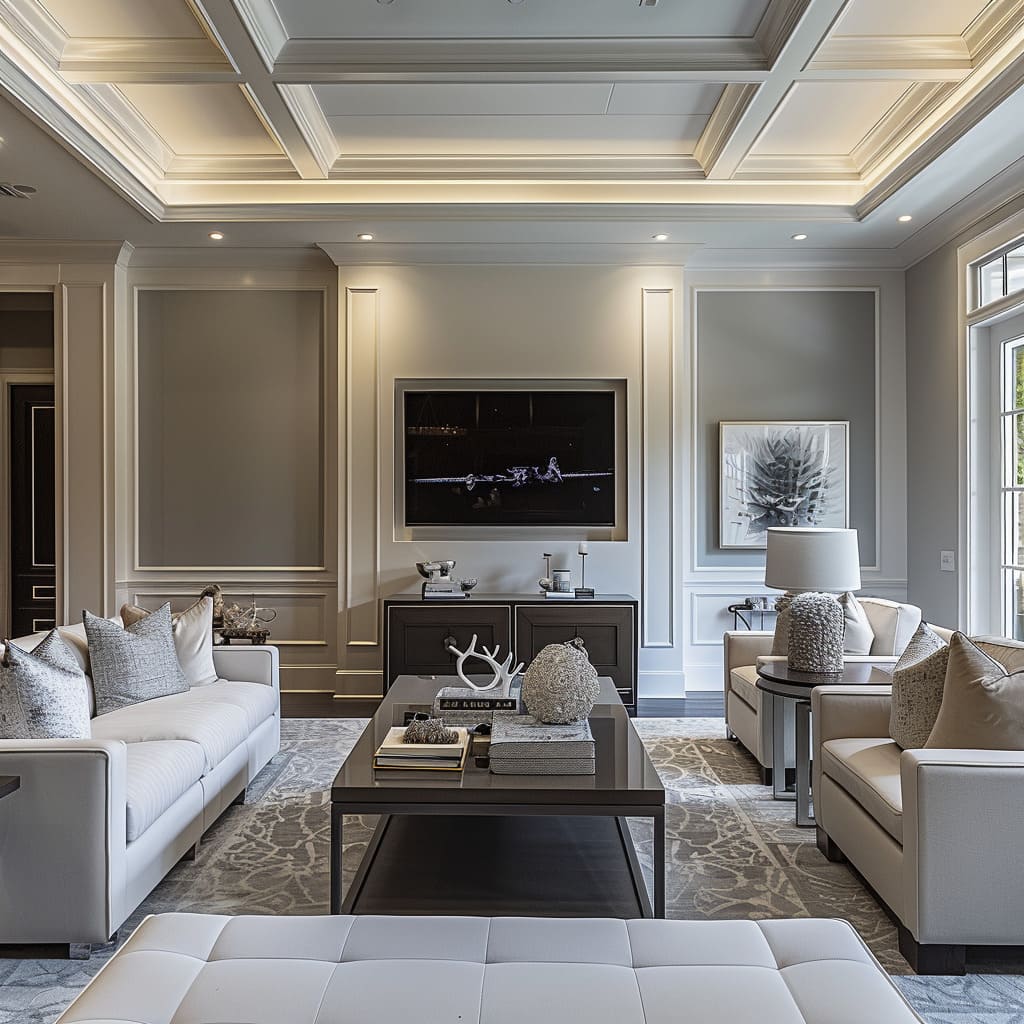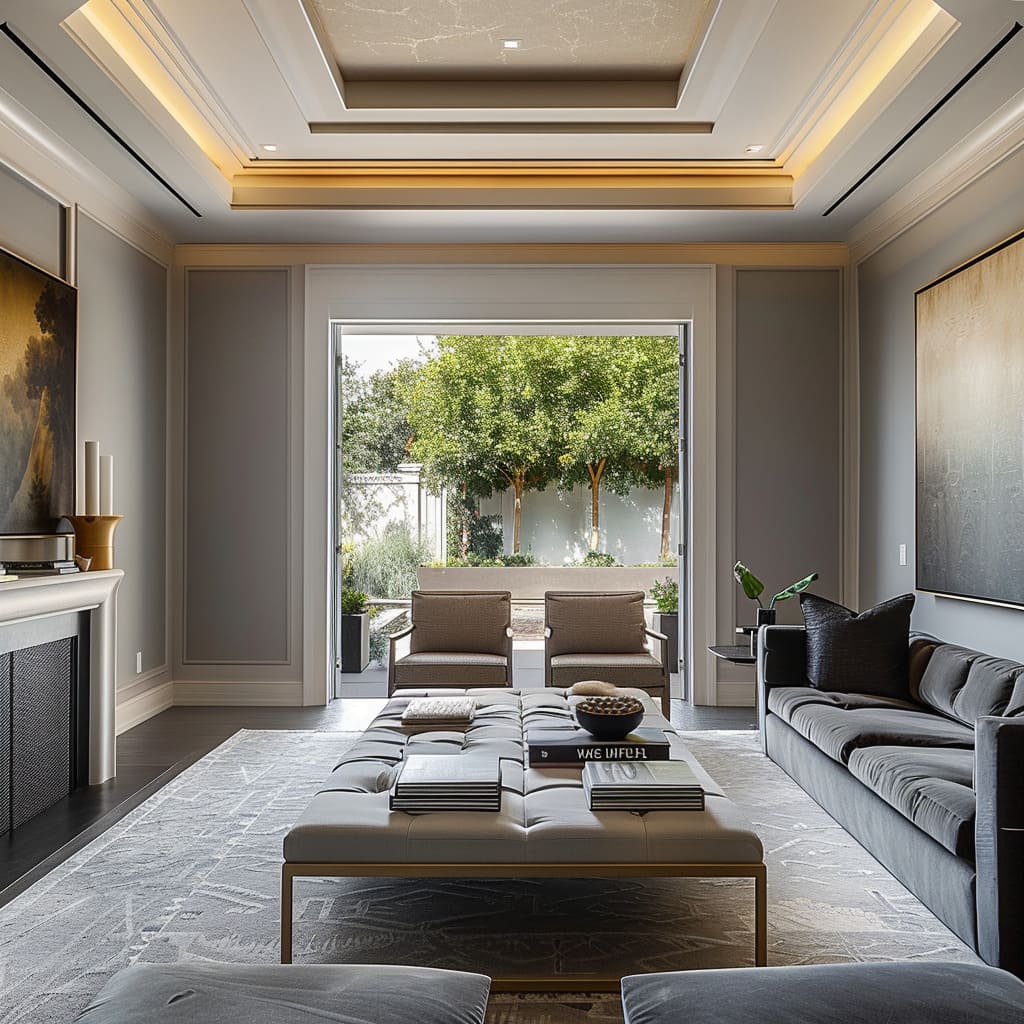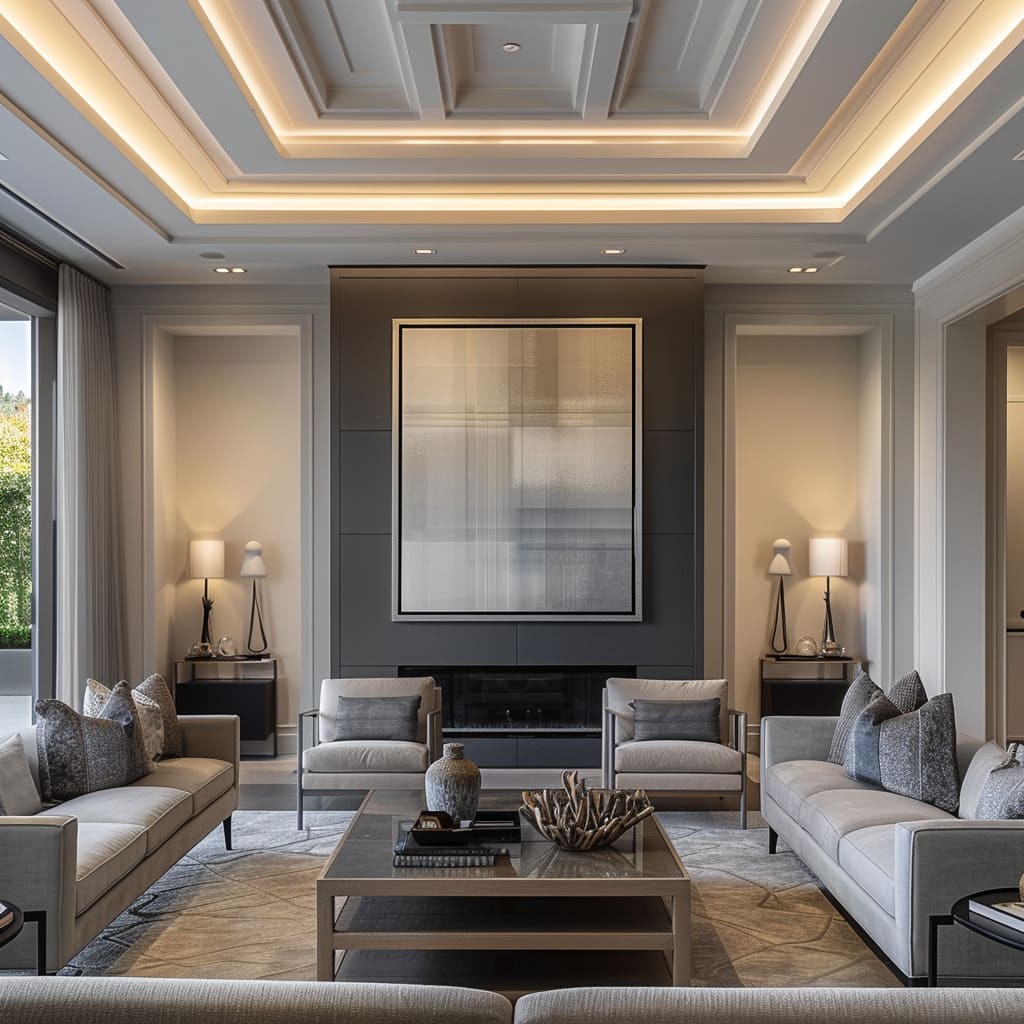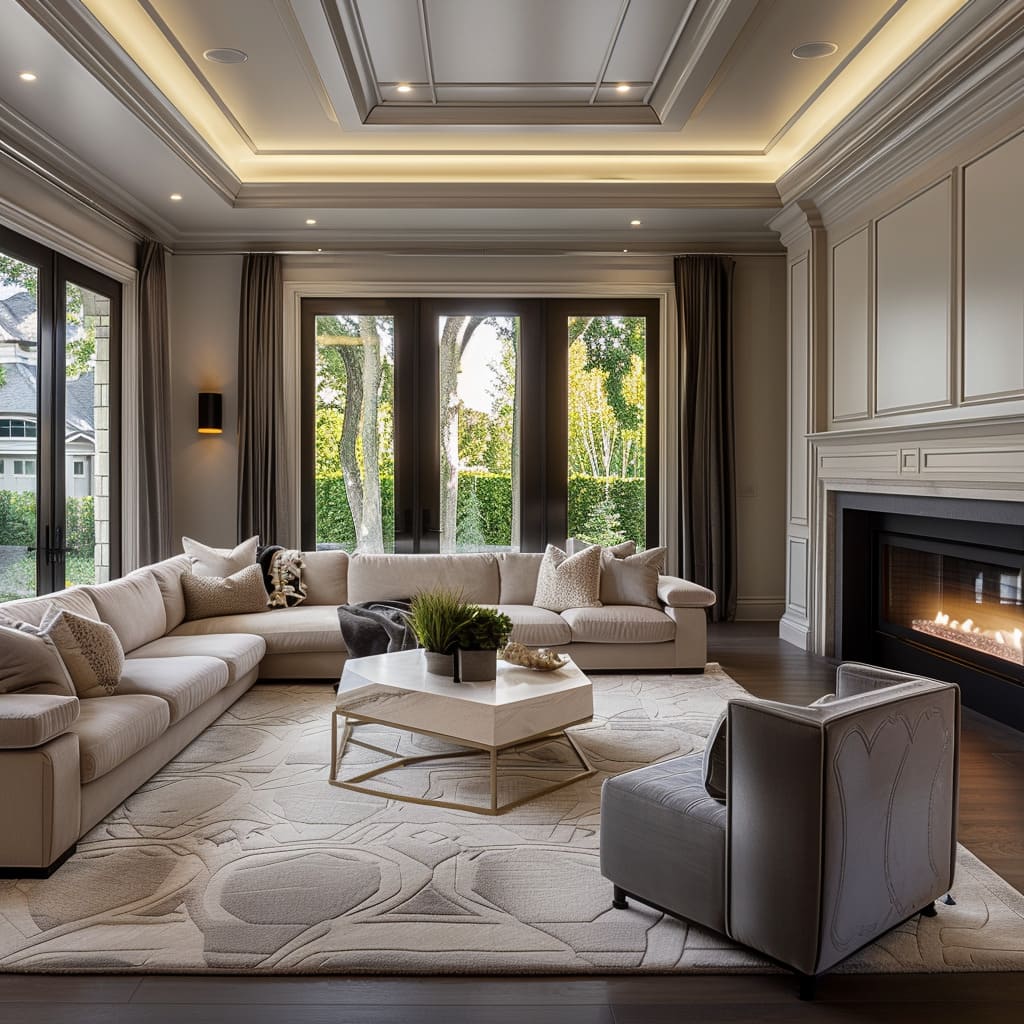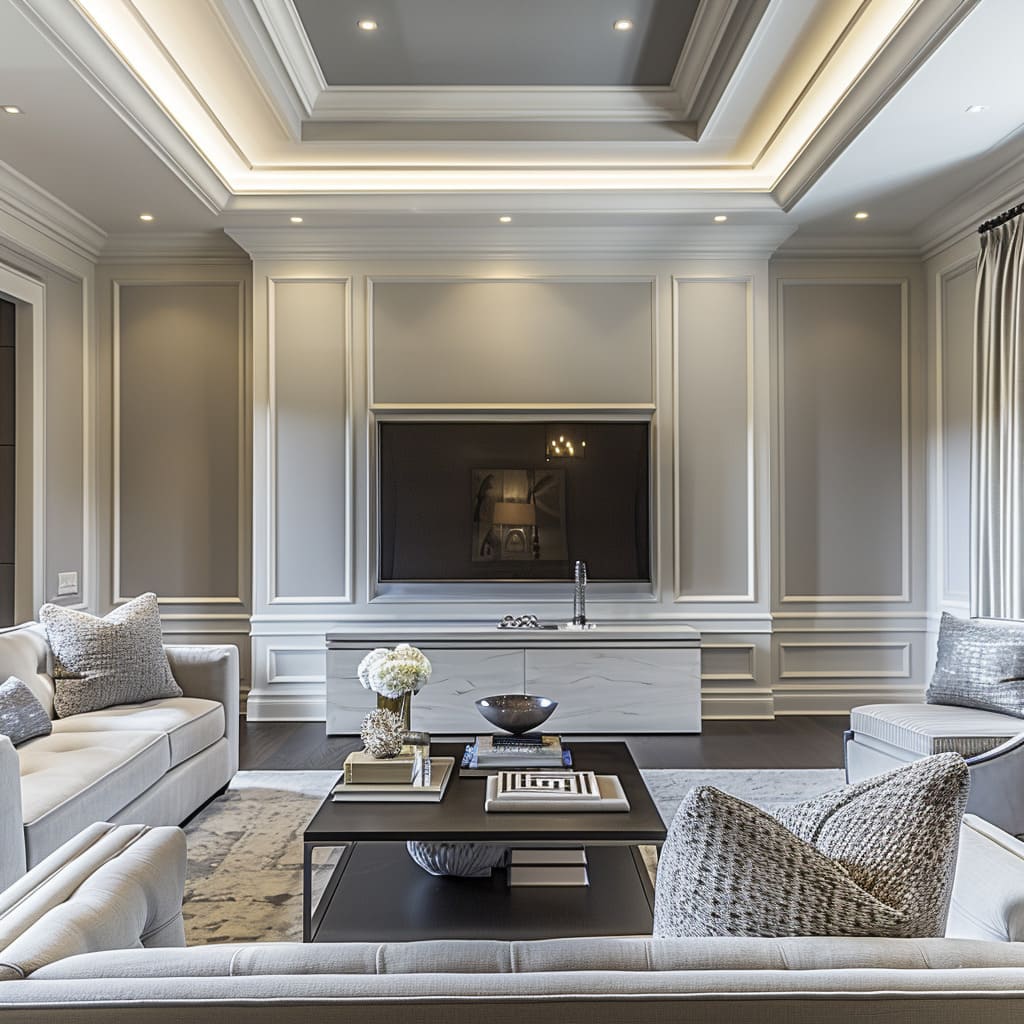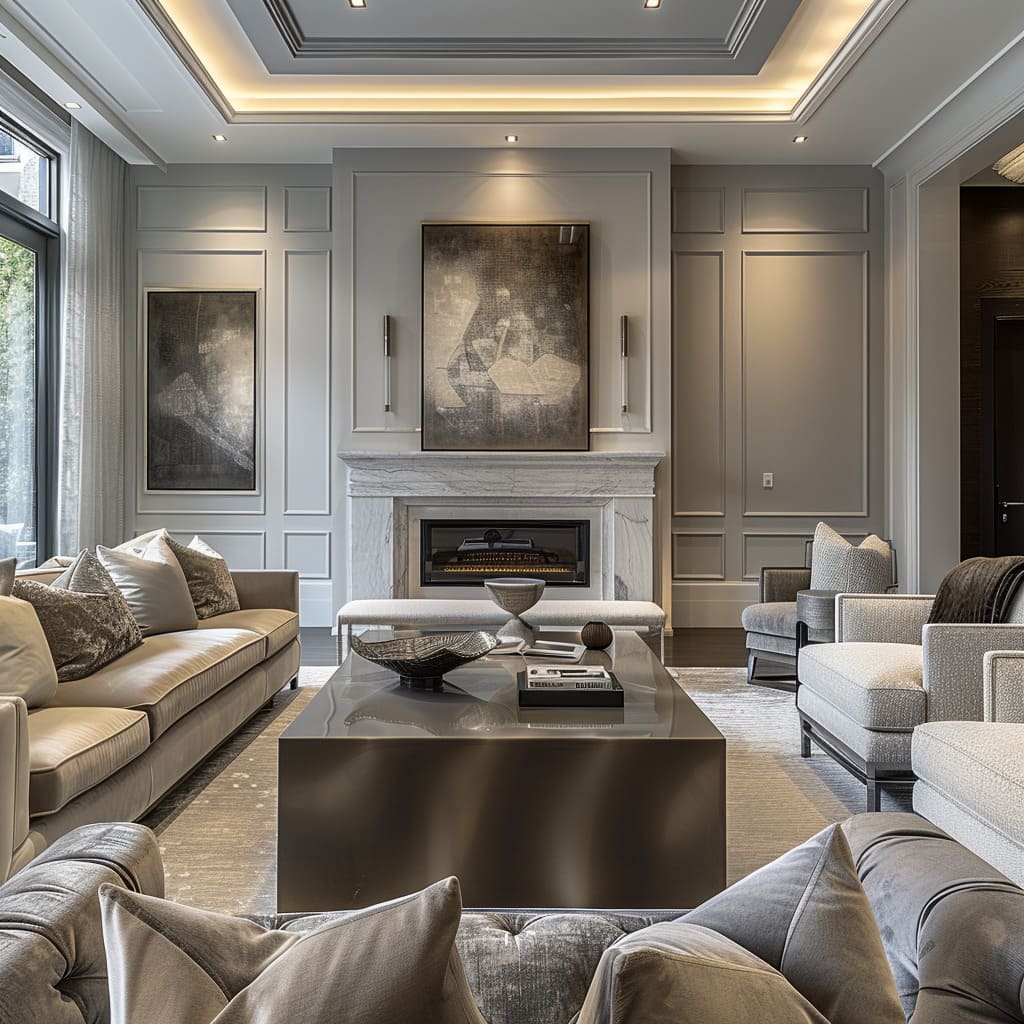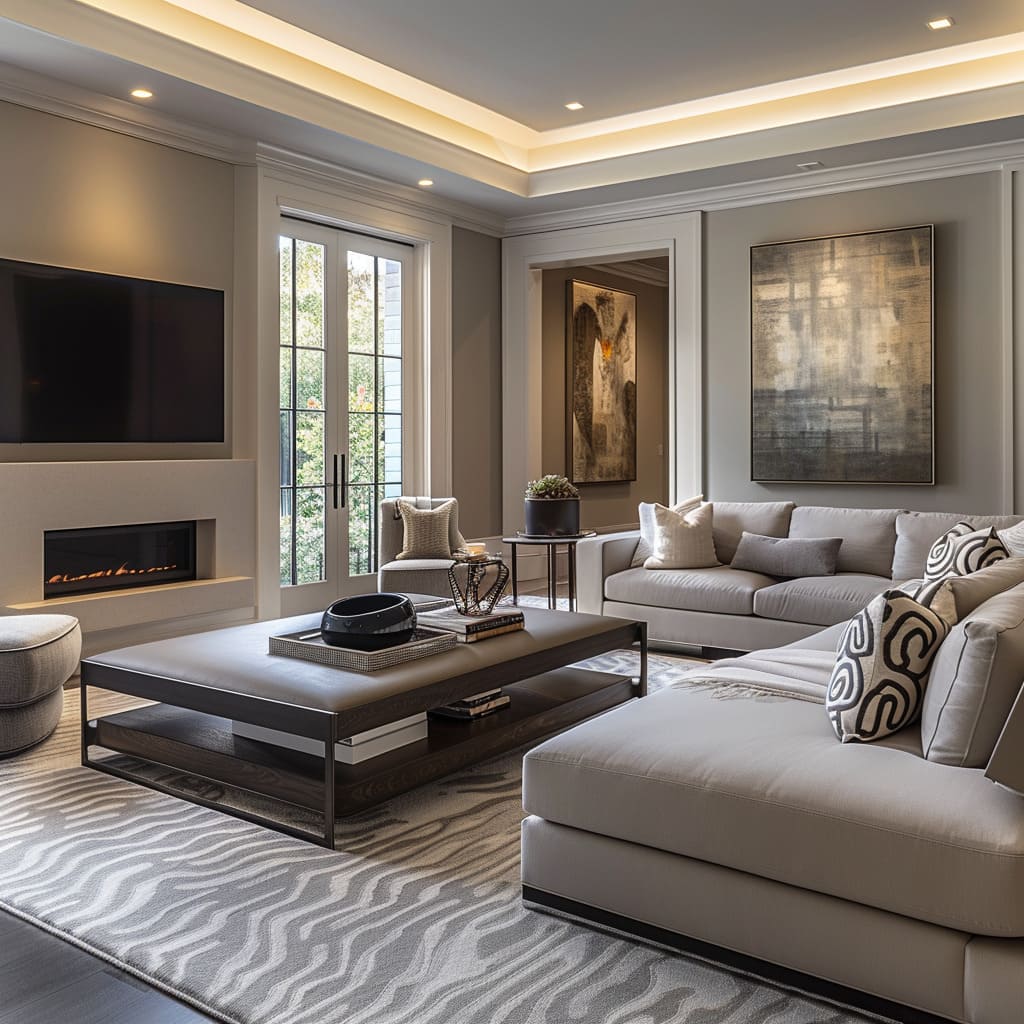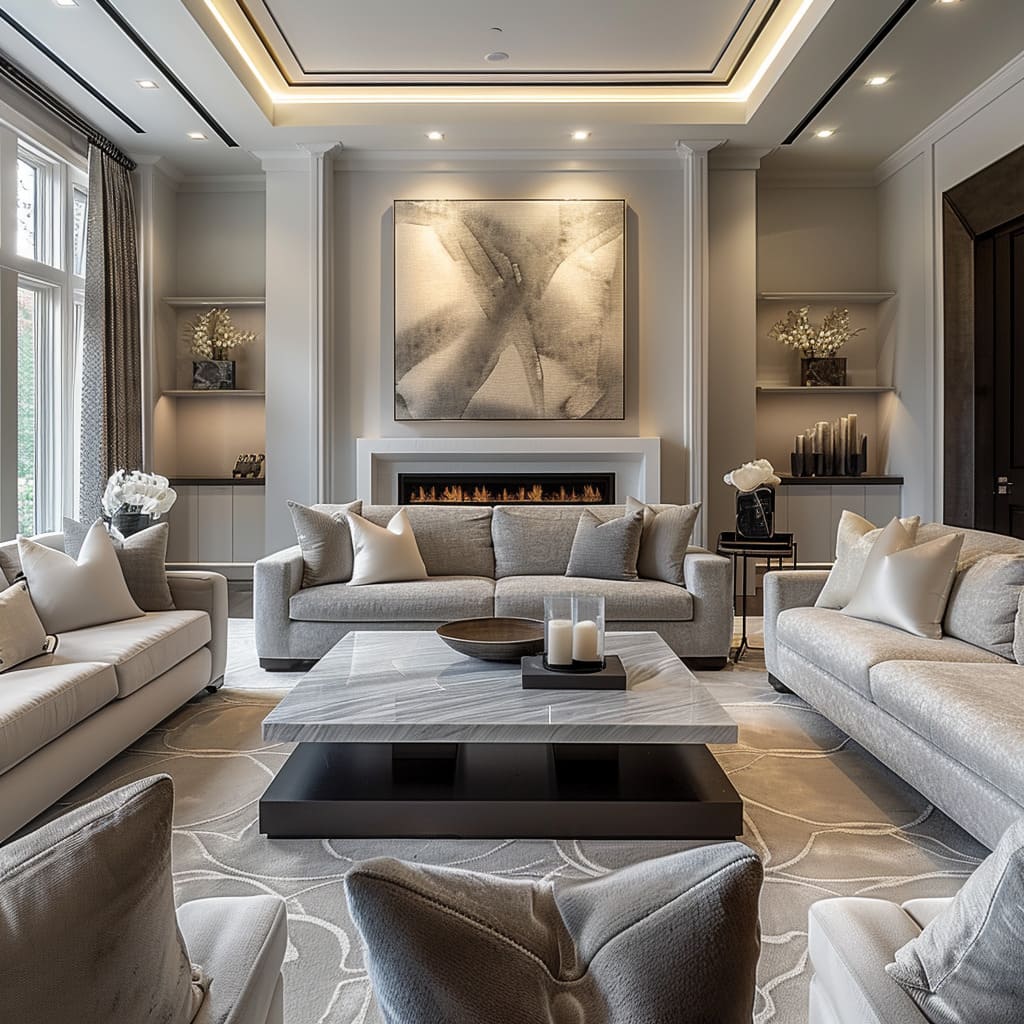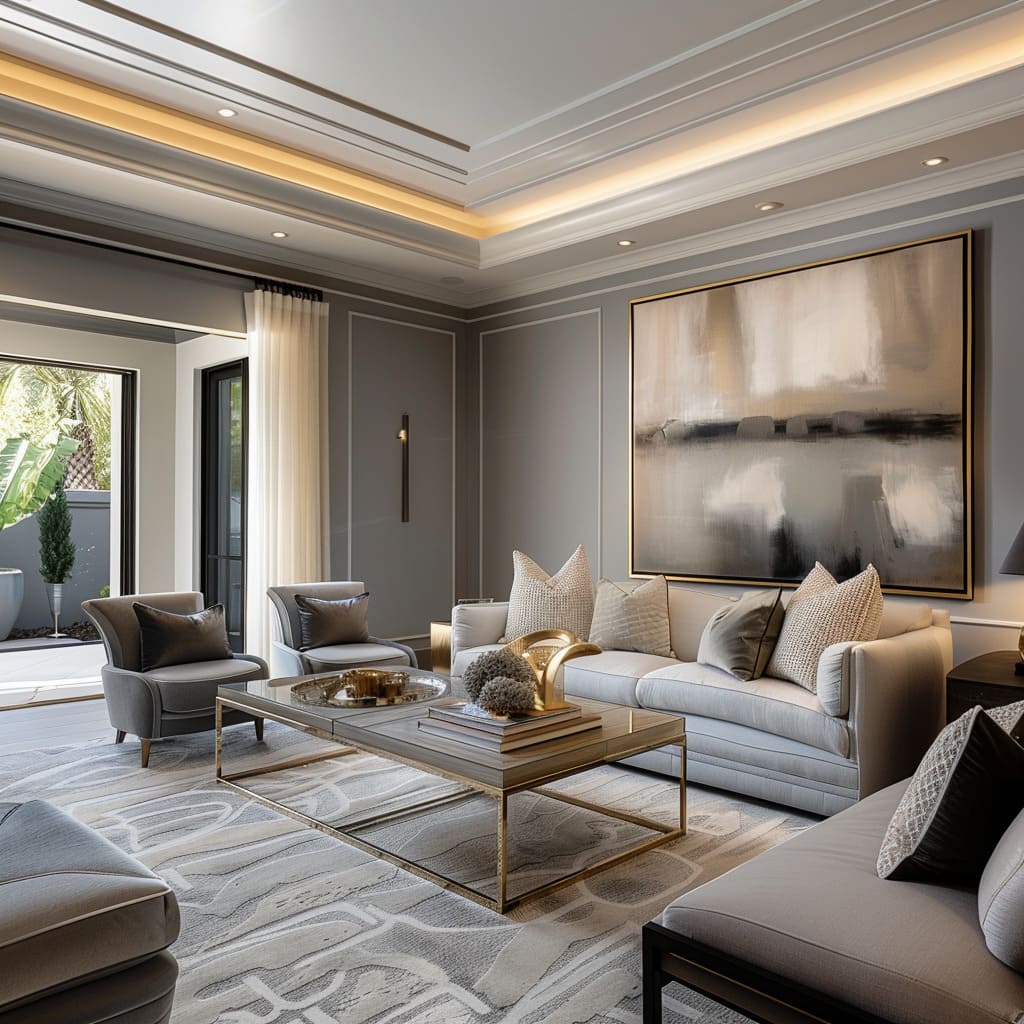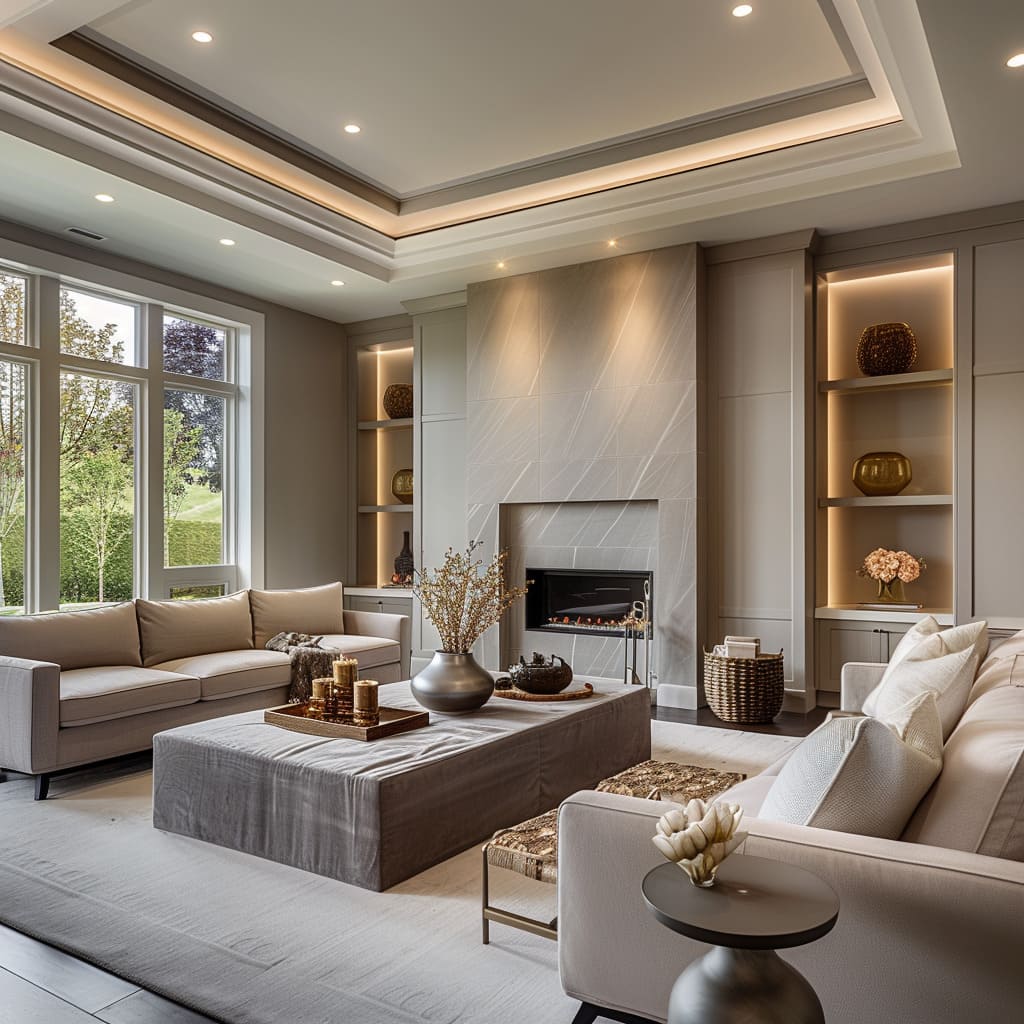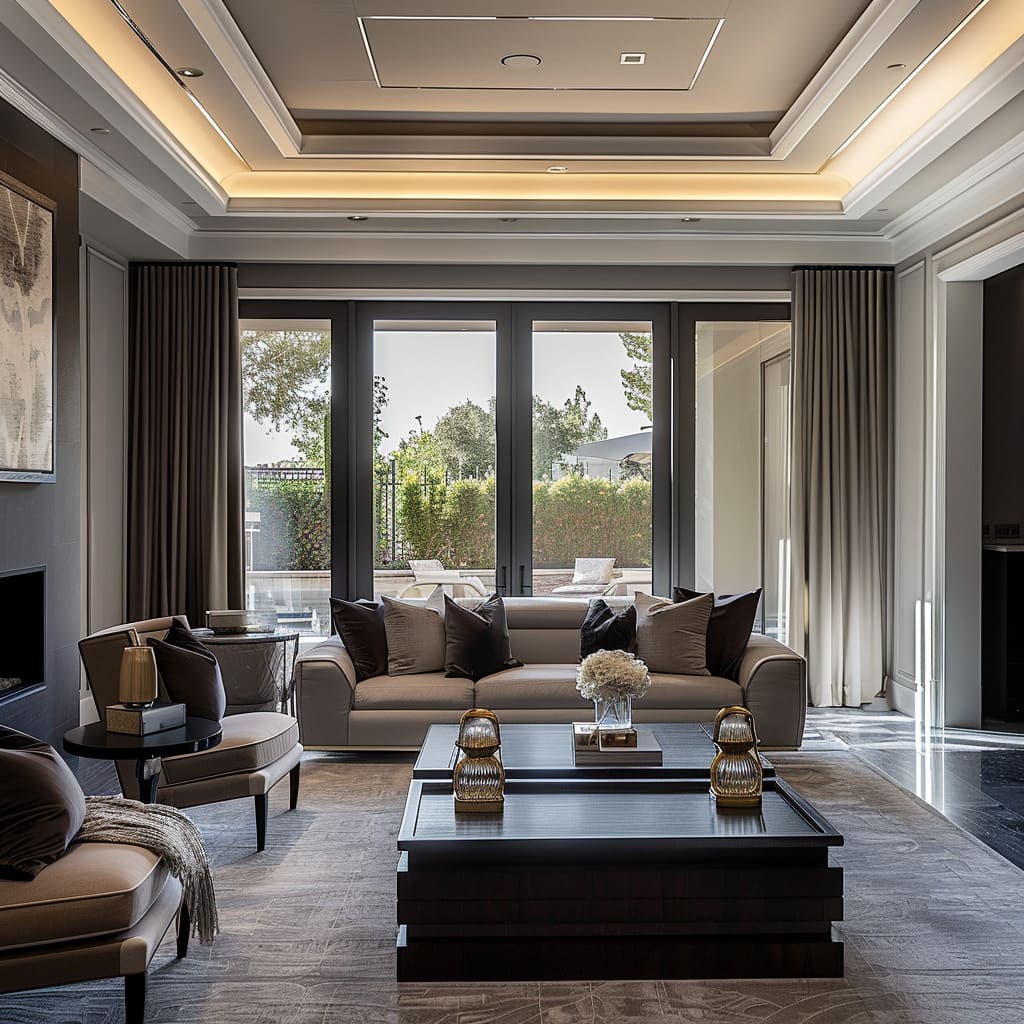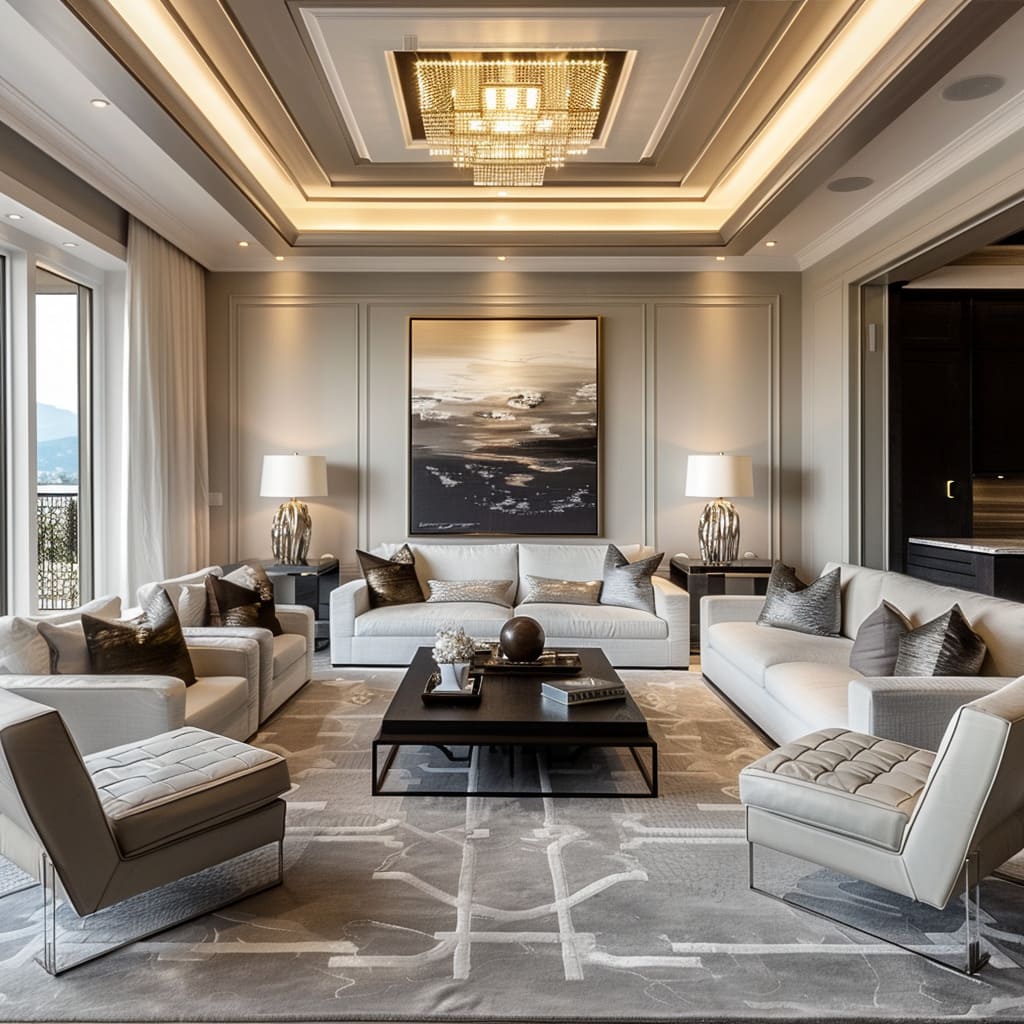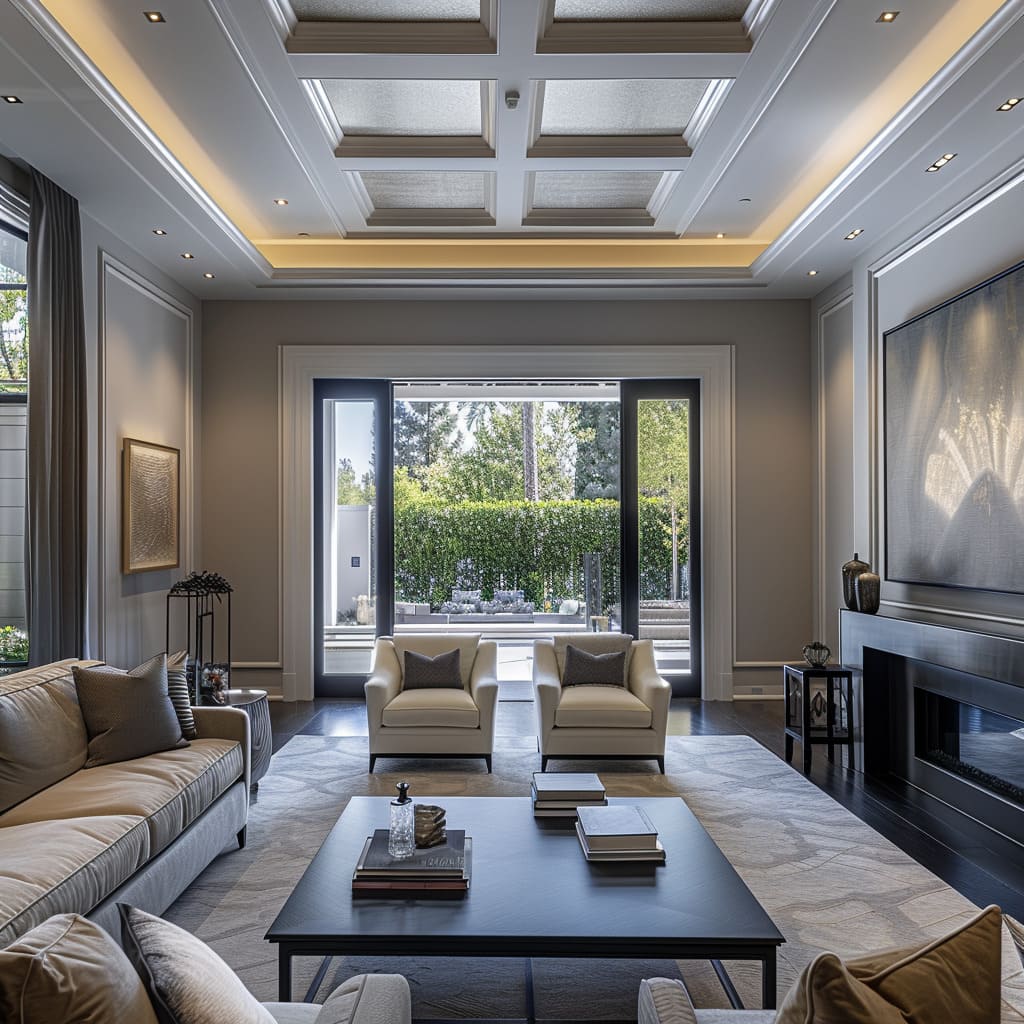Exploring the field of interior design, this article investigates the synthesis of aesthetic choices and structural design, shaping spaces that excel in form and function. We aim to unpack the fundamental elements that forge the essence of modern interiors, scrutinizing the synergy between chromatic subtleties, illumination, spatial arrangement, material textures, intricate details, and cohesive motifs.
This inquiry intends to shed light on the underpinnings of what elevates a design from functional to finesse, offering insights into the nuanced interplay that forges an atmosphere where every element serves a purpose beyond the visual.
Color and Light Dynamics
Interior spaces are not merely areas to be filled; they are canvases where color and light converge to create an experience. This section will dissect the strategic deployment of these elements, focusing on how they are utilized to shape the aura and personality of a space without words.
Muted Color Emphasis
Hues that whisper rather than shout dominate the space, bringing forward a calm that invites one to unwind. These hues do not compete for attention but support the overall tone of tranquility and repose.
Discrete Chromatic Accents
Here, color is a subtle nod rather than a broad stroke. It’s the art of using modest bursts of color to draw the eye, to enhance, not to dominate, to complement, not to overpower.
These dashes of color are placed with precision to break the monotony without causing a visual commotion.
Ambient Lighting Mastery
Like the gentle ebb and flow of a quiet tide, ambient lighting is the undercurrent that gives life to the space. It’s an orchestrated play of light that softens shadows and graces a room with an inviting glow, elevating the room’s character.
Accent Lighting Placement
Purposeful and selective, accent lighting serves as the spotlight for the room’s finest features, creating an interplay of light and shadow that adds depth and drama. The glow that emulates from these lights gives artwork and architectural details their moment to shine.
Through the strategic interplay of these elements, each space narrates its own story without the need for audible words. It is a silent dialogue between the room and those who enter, a visual symphony conducted masterfully to affect emotions subtly yet significantly.
Spatial Composition and Flow
A considered spatial layout orchestrates the flow from one area to the next, creating a narrative that one moves through, encountering both fluidity and moments of repose. This narrative is composed with an eye for how space is not just seen but felt and traveled.
Seamless Transitions
The passage between rooms is effortless, creating a subconscious guide from space to space. This is achieved through continuity in design elements that visually connect separate areas, like a silent guide taking you by the hand from room to room.
Spatial Flow Optimization
Furniture and built elements are arranged thoughtfully to direct movement without obstruction. The placement of these pieces is not random; it’s a choreography that anticipates the daily dance of life, allowing for an intuitive and free-flowing experience.
Visual Weight Distribution
The equilibrium of a room is crucial. It’s a delicate balance where each piece contributes to a sense of completeness without overwhelming the senses.
This careful arrangement creates a visual harmony that feels both grounded and uplifting.
Intentional Space Allocation
Every inch of the space is allocated with intent.
It’s the strategic positioning of furniture and decor that serves a dual purpose – fostering ease of movement while also catering to visual appeal. The areas are purposefully open yet filled with intent, allowing for both community and solitude.
In this crafted spatial journey, every step, turn, and pause is anticipated and shaped for ease, revealing a landscape that is both functional and visually enticing. The orchestration of these spaces is not merely about aesthetics; it is about creating an ambiance that is a backdrop to the human experience, anticipating needs and desires before they are even expressed.
Surface and Texture Narrative
Surface and texture are the unspoken languages of design, speaking to the senses in a way that color and form alone cannot. This tactile dialogue creates layers of interest, inviting touch and engagement with the space.
Tactile Diversity
From the soft whisper of plush fabrics to the solid chorus of stone, a range of materials invites the hands to experience the environment as much as the eyes. This selection of diverse materials enhances the depth and character of the interiors.
Discover the art of enhancing interior spaces with textured fabrics.
Our article delves into how these materials add sophistication and depth to any room. Learn more by visiting .
Sleek Surface Finishes
The reflective sheen of polished surfaces acts as a counterpoint to the matte finishes elsewhere. These sleek planes reflect light and views, adding a dynamic layer to the spatial composition.
Dynamic Textural Interplay
A dialogue is crafted between contrasting textures. It’s a play of shadows and highlights, soft and hard, matte and shine, each texture accentuating the other, creating a scene of tactile harmony.
Contrasting Material Use
The deliberate juxtaposition of different materials acts as visual punctuation in the space. It’s a thoughtful contrast — wood against metal, glass against fabric — that delineates and defines, creating focal areas that catch and delight the eye.
In these environments, surfaces and textures do more than complete the look; they define it. They are an integral part of the spatial story, each texture selected to add its voice to the chorus that makes up the symphony of the space.
The tactile experiences are not afterthoughts; they are integral chapters of the narrative, essential to the plot that unfolds as one interacts with the space.
Design Detail and Craftsmanship
Design and craftsmanship converge in a celebration of the meticulous and the refined. It’s where the minutia of a space tells a story of dedication to the craft, translating into an environment that exudes quality and attention to the finest points of design.
Precision in Detailing
Every stitch, joint, and brush stroke is an intentional choice, contributing to the narrative of excellence. It’s the carefully chosen hardware, the precision of a beveled edge, and the deliberate spacing of decorative elements that signal a bespoke approach.
Custom Craftsmanship
Items in the space are not merely placed; they are inscribed into the design. The handcrafted furniture, the millwork that frames the rooms, the custom cabinetry — all speak of a lineage of artisan skill.
Explore the significant impact of bespoke manufactured furniture on interior design. Our detailed discussion sheds light on how custom pieces can define and enhance any space.
To learn more, visit Role of Bespoke Manufactured Furniture in Interior Design.
Subtle Decorative Molding
The molding does not scream for attention; it quietly defines the space. Its contours and reliefs are a soft-spoken language of geometry and form, adding layers of sophistication without the clutter of extravagance.
Discover how moldings creates a harmonious interior design. Dive into our analysis on blending traditional architectural elements with modern aesthetics by visiting A Harmony of Moldings, Wainscoting, and Contemporary Furniture.
Custom Joinery
The joinery is more than the sum of its parts. It is the artful connection of materials, shaped to fit together with seamless precision.
It represents the harmony of form and function, all while maintaining an aesthetic grace.
Each detail in these spaces is a testament to the passion for excellence that went into creating them. This is not design that shouts; it is design that speaks in a hushed tone to those who take a moment to listen.
It’s an ode to the age-old tradition of taking the time to do something right, to create something lasting. This is where the beauty of design meets the integrity of craftsmanship, resulting in spaces that resonate with quality and timelessness.
Thematic and Decorative Cohesion
The coherence of a design theme is the silent narrator of a space’s story, establishing an undercurrent of style that ties each room together. This section explores how a focused theme and its skillful repetition can create a visual language that speaks with unity and grace.
Consistent Theme Adherence
Like a well-crafted novel that stays true to its genre, each space respects the overarching theme, creating a thread of consistency. Furniture, fixtures, and fabrics all echo a central motif, presenting a space that’s unified in its design intention.
Rhythmic Repetition in Decor
Patterns and shapes echo throughout the space in a calculated cadence, much like a leitmotif in a symphony. This repetition is not monotonous; it’s a strategic recurrence that adds a sense of order and harmony to the space.
Selective Accessorizing
Decorative objects are curated with restraint and intention, placed to accentuate rather than crowd. Each object serves a purpose, whether to catch the eye, evoke emotion, or complement the surrounding design elements, ensuring the space remains clear and composed.
Purposeful Asymmetry
Deliberate asymmetrical arrangements break the monotony and inject a sense of dynamism. This strategic imbalance is the mark of a contemporary mindset, fostering spaces that are grounded yet kinetic, orderly yet spirited.
By weaving these elements together, a thematic and decorative synchronicity is achieved, fostering spaces that are visually interconnected and resonant. It’s a conscious crafting of aesthetic harmony, where the chosen motifs are whispered across the rooms, creating a continuous and soothing visual sonnet.
This cohesion is a dance of consistency and variation, where each element plays its part in the grand design ballet.
Architectural Integration and Accentuation
The harmony between architectural form and decorative detail is pivotal, forming a chorus that resonates throughout the space. This segment delves deeper into the artful fusion of structural features with aesthetic elements, creating environments that are both beautiful and intelligently designed.
Accentuated Ceiling Design
The ceiling, often overlooked, is transformed into a canvas of intricacy. With recesses and embellishments, it rises above a mere overhead surface, contributing to the space’s dimensionality and character.
The interplay of light and shadow cast by these details adds a sculptural quality to the overhead expanse.
Fireplace Integration
The fireplace, a traditional symbol of hearth and home, is woven into the room’s narrative.
It stands as a focal gathering place, a nexus of warmth and sociability. Its design complements the room’s theme, making it not just a source of warmth but also of aesthetic pleasure.
Streamlined Window Treatments
Window dressings are more than just fabric; they are strategic elements that frame views and control the infusion of daylight. With a nod to both function and form, these treatments harmonize with the room’s architecture, enhancing the space without overpowering it.
Innovative Ceiling Fixtures
Light fixtures are chosen not just for their luminance but for their role as modern sculptures in the space. Their innovative designs and placements are pivotal in creating the ambience, adding a touch of contemporaneity to the ceilings they adorn.
Each of these components plays a vital role in marrying the room’s structural integrity with its aesthetic value. The architectural details are not mere supports for the space but are integral to the thematic and aesthetic tapestry of the environment.
They serve to reinforce the conceptual vision of the space, ensuring that every structural element is in dialogue with the decorative, contributing to a seamless and holistic design story.
As we draw this examination to a close, the intricate composition of interior design elements that has been unfolded here showcases the nuanced complexity and intention behind modern living spaces. From nuanced hues and deliberate illumination to thoughtful spatial articulation and the interplay of textures, the careful calibration of each detail contributes to a comprehensive design narrative.
The fusion of artisanal detail and consistent thematic expression underlines a philosophy where design serves both aesthetic enrichment and practical necessity. It’s this careful curation of multiple design principles that underlines the sophistication inherent in contemporary interiors, affirming that impactful design is an experience to be engaged with, not just observed.

